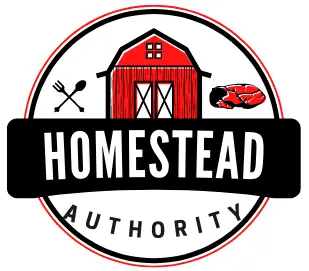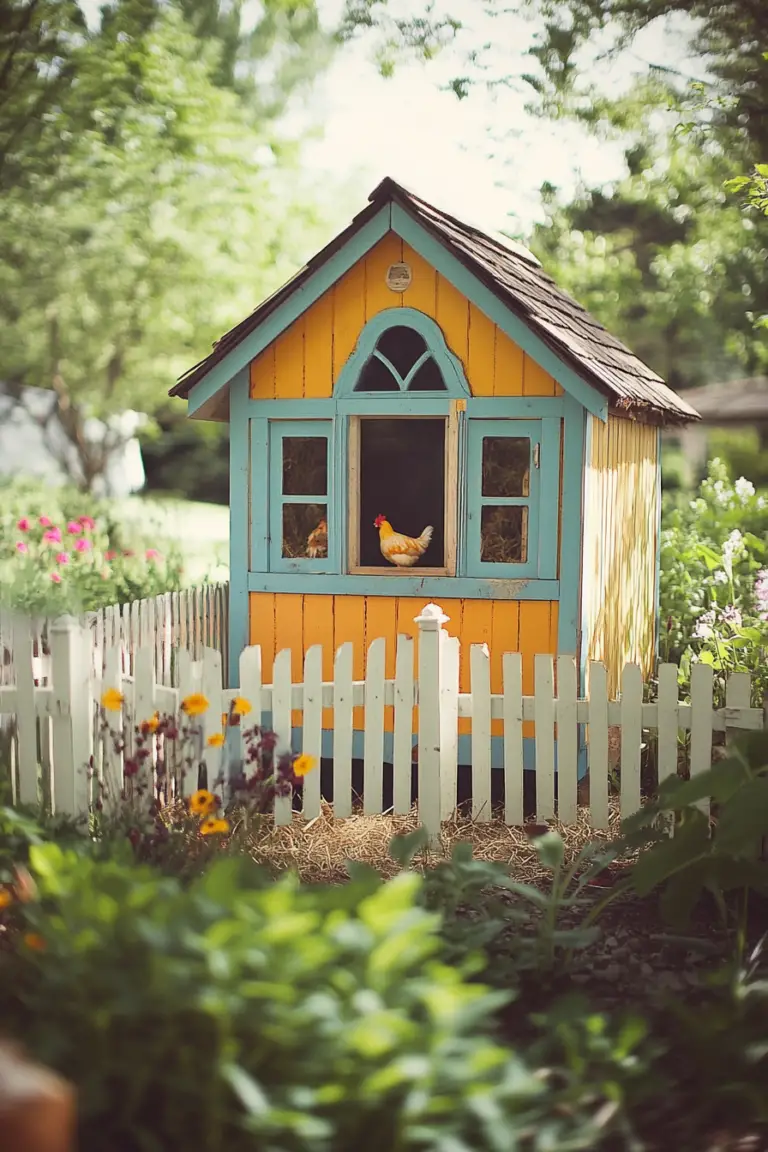65+ Cheap Duck Coop Ideas
Backyard homesteading is a fulfilling venture that allows individuals and families to reconnect with nature while producing their own food. One of the most rewarding aspects of this lifestyle is raising ducks, which are relatively easy to care for and provide eggs and companionship.
For those with limited space and resources, establishing a duck coop doesn’t have to be a daunting or expensive task. With creativity and resourcefulness, you can build a functional and comfortable coop for your ducks using affordable materials readily available in your community.
In this article, we will explore various budget-friendly duck coop ideas that are suitable for urban and suburban settings. These practical setups rely on repurposed materials and simple designs, making them achievable for anyone eager to embark on their homesteading journey.
Remember, successful homesteading is not about having the fanciest tools or structures; it’s about making the most of what you have and enjoying the process of creating a sustainable life.
1. Compact Duck Coop from Recycled Pallets
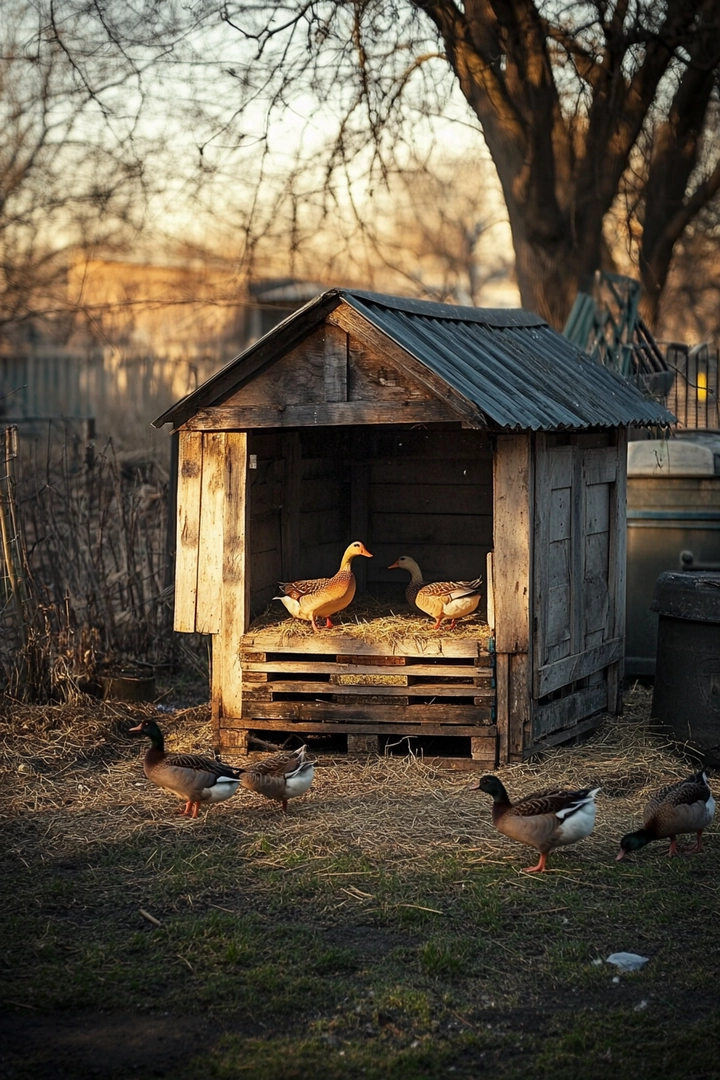

This compact duck coop is an excellent choice for a small urban backyard, utilizing recycled pallets for a sustainable and cost-effective shelter. To create this coop, you will need a few pallets, some corrugated metal for the roof, and basic tools like a hammer and nails.
The pallets can be arranged to form the walls and floor of the coop, providing a sturdy structure that’s also easy to disassemble if necessary. The corrugated metal roof will protect your ducks from rain and direct sunlight, ensuring they have a comfortable environment.
Space-wise, this coop can fit snugly in a corner of your yard, ideally in an area where your ducks can forage on grass or plants. It’s essential to ensure the coop has enough ventilation to keep the air fresh while protecting the ducks from predators.
Inside, you can scatter straw for bedding, which will help absorb moisture and keep the ducks cozy. This design not only provides a home for your ducks but also contributes to a sustainable lifestyle by reusing materials that would otherwise go to waste.
- Use non-treated pallets to avoid harmful chemicals leaching into the ducks’ environment.
- Consider placing a small door to allow easy access for feeding and cleaning.
- Secure the coop with additional fencing if necessary to protect the ducks from predators.
- Document your progress by taking photos at each stage and sharing them online to inspire others.
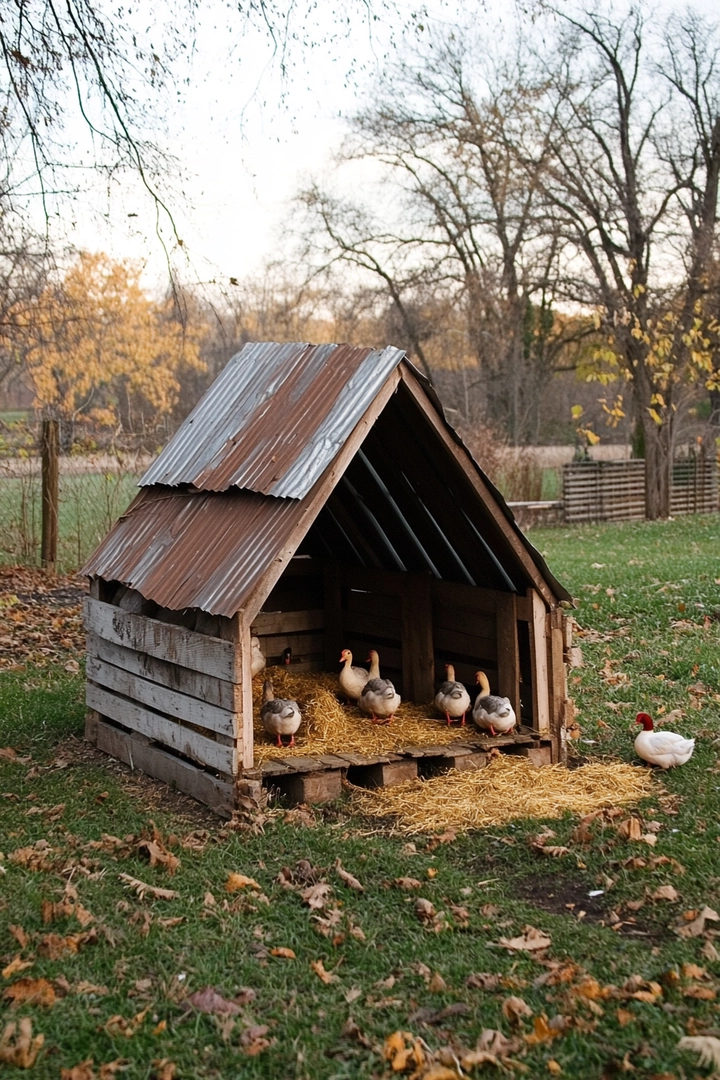
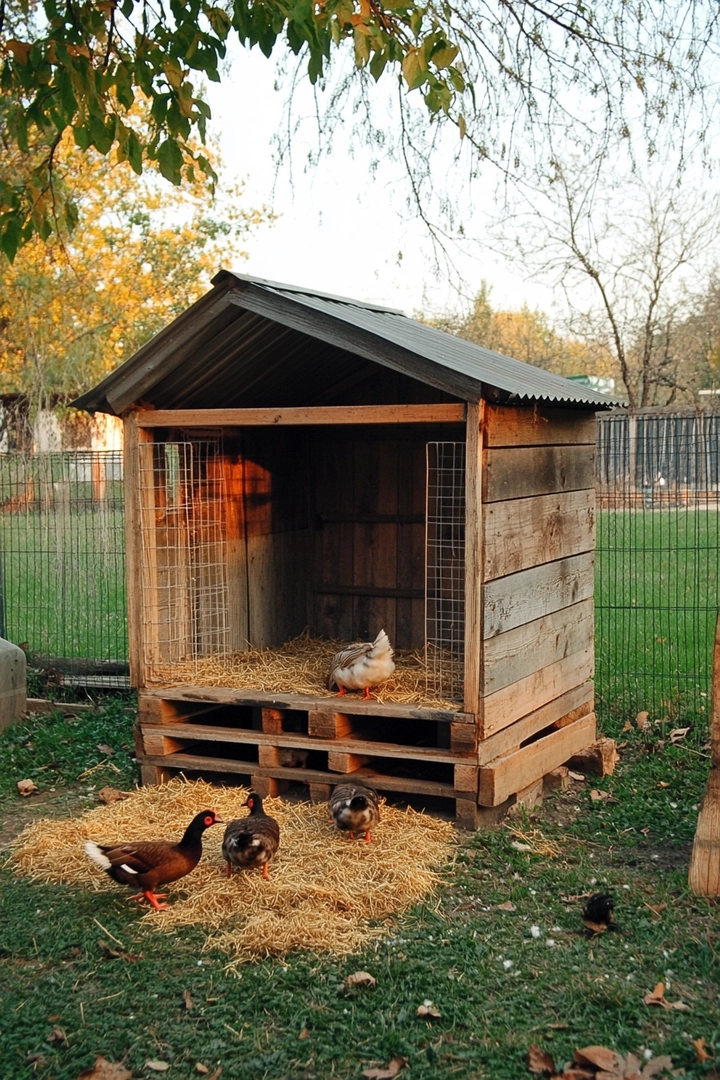
2. Duck Coop Built from Old Wooden Crates
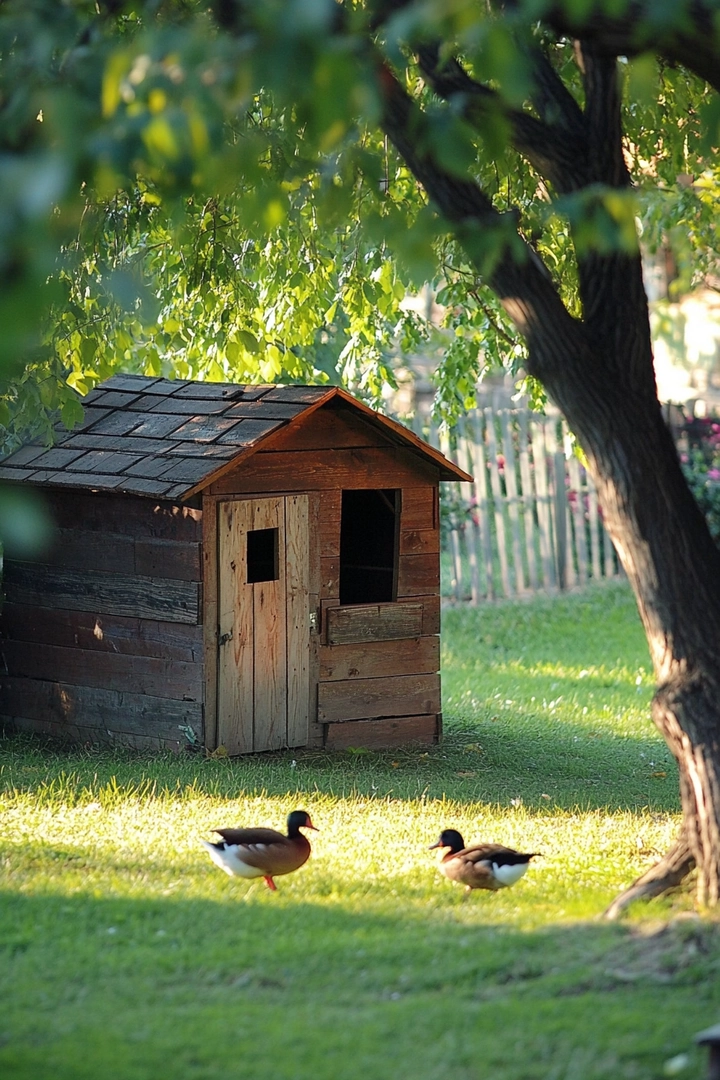
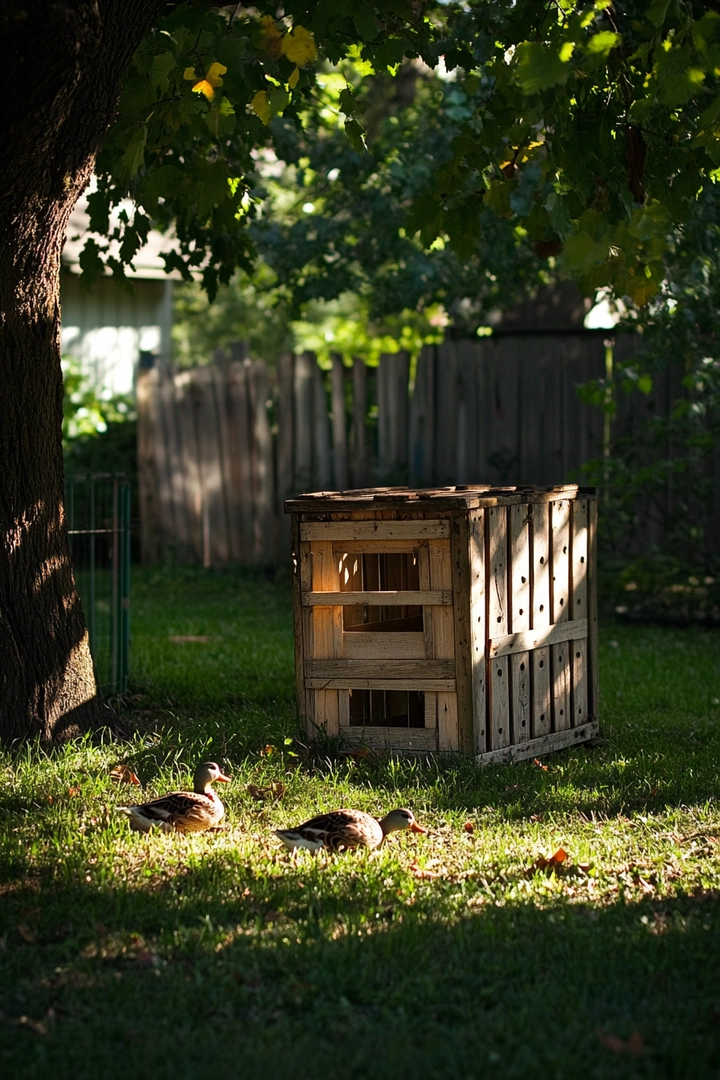
An inexpensive duck coop can be constructed using old wooden crates, which are often available for free or at a low cost. This design is simple and effective, making it perfect for a suburban yard.
The crates can be stacked or arranged side by side to create a sheltered area with a small door for the ducks. Make sure to include ventilation holes to keep the air fresh while allowing natural light to enter.
Positioning the coop under a shade tree will help keep the interior cool during hot days. Ducks love to forage, so it’s essential to provide a grassy area nearby where they can roam freely.
This setup encourages natural behaviors, allowing your ducks to scratch and explore their surroundings, which is vital for their well-being. You can enhance the coop by adding a small water bowl inside for drinking, ensuring they have access to fresh water at all times.
- Look for crates that are still sturdy and free of rot or mold.
- Use hay or straw as bedding to provide comfort and absorb waste.
- Monitor the ducks regularly to ensure they have enough space and are not overcrowded.
- Share your experiences with friends or local community groups to build connections with fellow homesteaders.
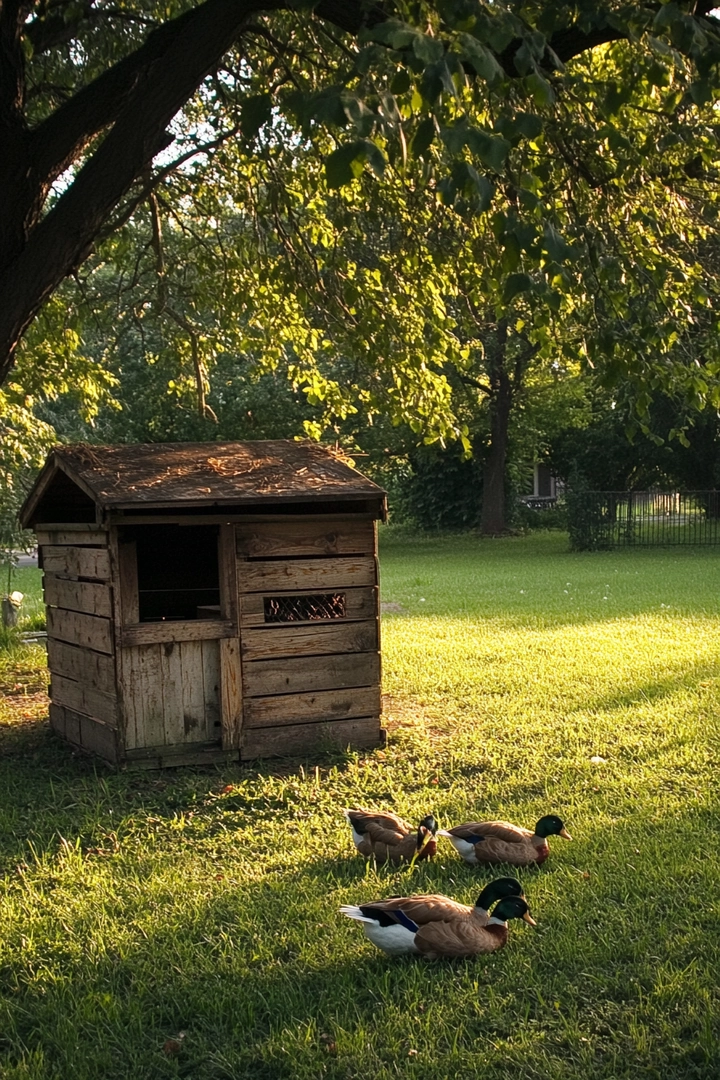
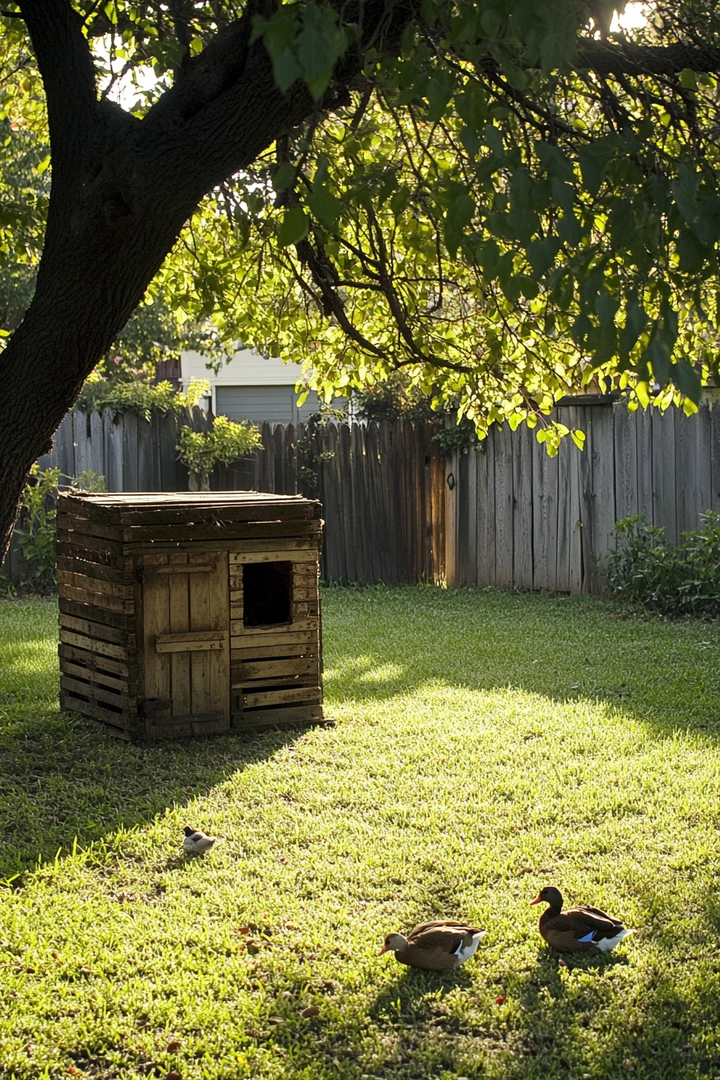
3. DIY Duck Coop from Reclaimed Wood and Wire Mesh
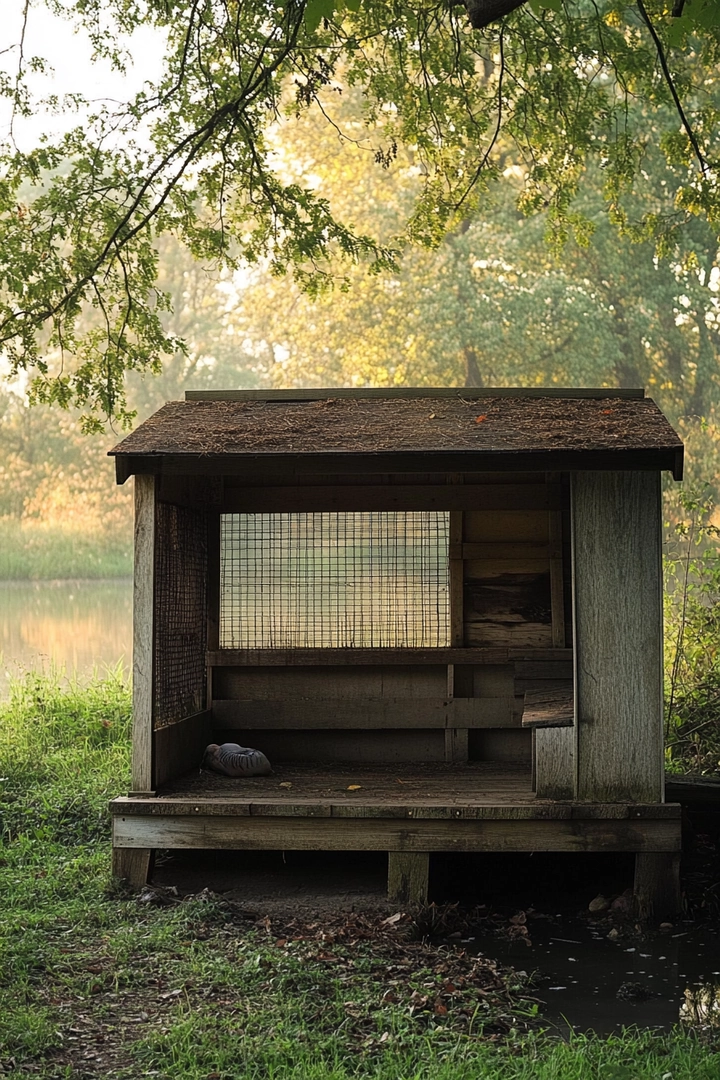
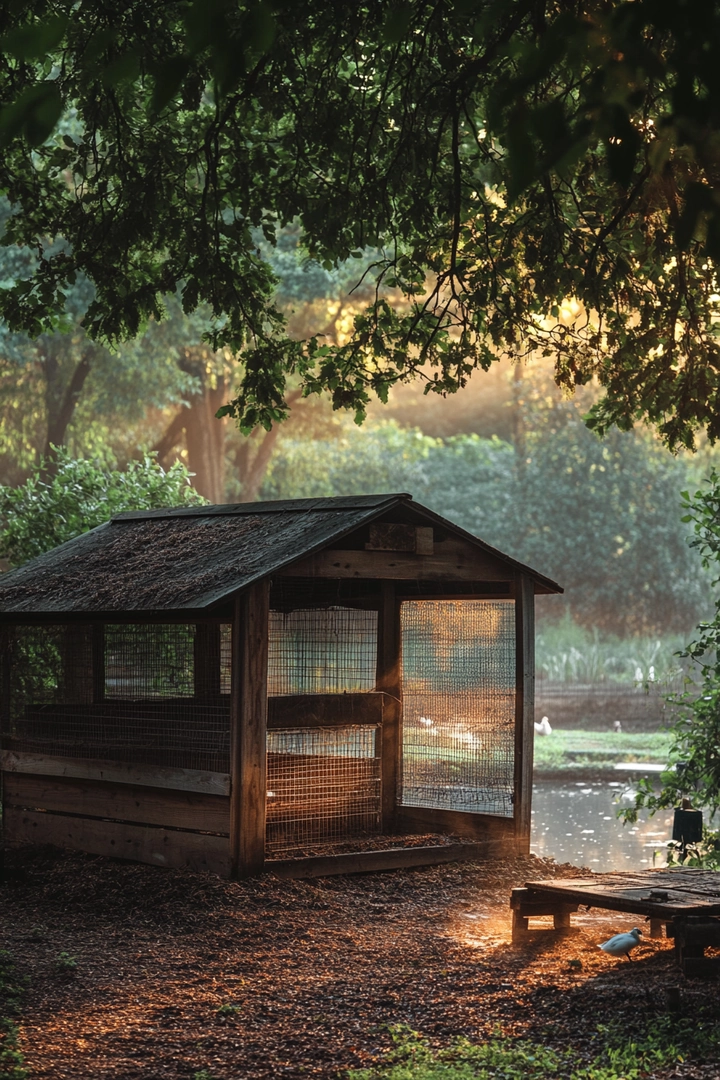
A DIY duck coop made from reclaimed wood and wire mesh is an environmentally friendly option that provides both shelter and security for your ducks. This design utilizes old wood scraps for the frame and wire mesh to create a safe enclosure.
The slanted roof allows for efficient rain runoff, which is essential for maintaining a dry environment inside the coop.
Position this coop near a small pond if possible, as ducks enjoy swimming and dabbling in water. The coop can be designed to include nesting boxes where the ducks can lay eggs, enhancing their comfort and reducing stress.
The wire mesh should be carefully secured to prevent predators from entering and harming your ducks. Additionally, consider using natural materials like fallen branches or leaves to decorate the coop and provide a more appealing aesthetic.
- Make sure the wire mesh has small openings to keep out smaller predators like raccoons.
- Regularly check the structure for any wear or damage, especially after storms.
- Incorporate movable parts for easy cleaning and access to nesting boxes.
- Keep a journal documenting the ducks’ growth and behavior to track their development.
4. Mobile Duck Coop on Wheels
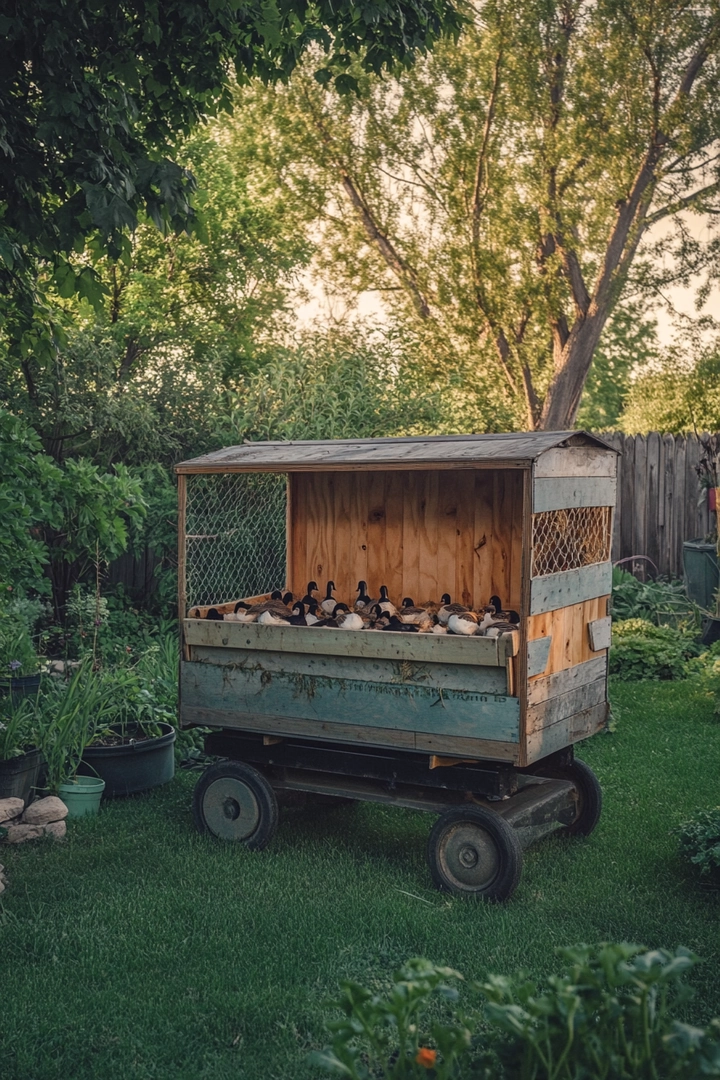
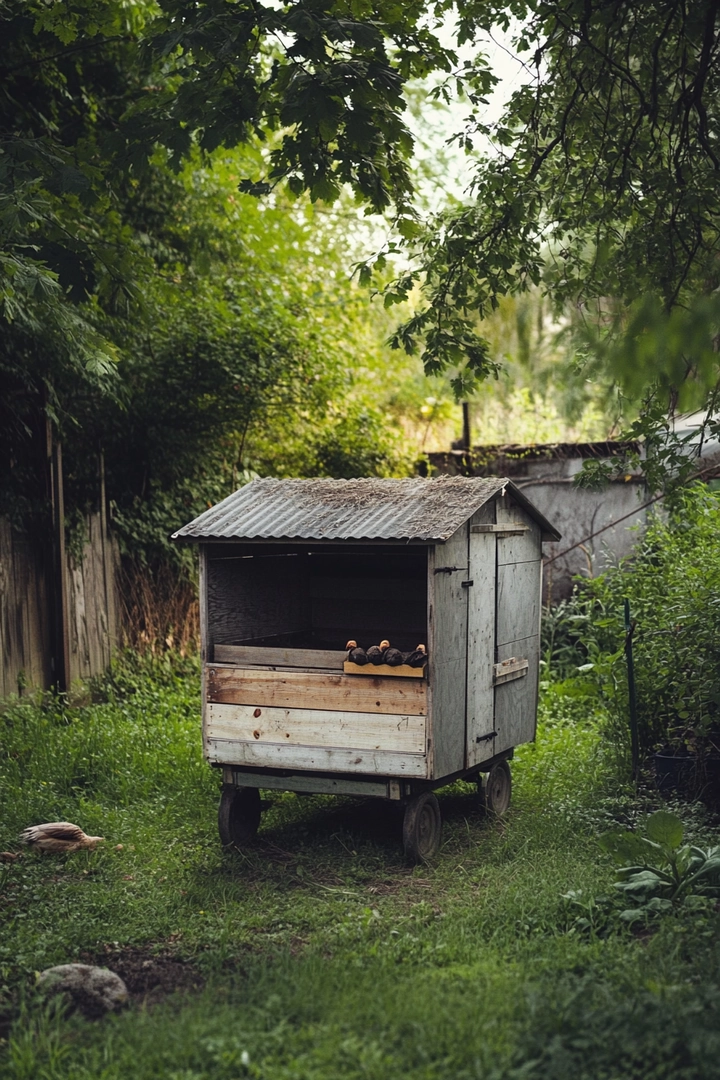
A small, mobile duck coop on wheels is a fantastic way to give your ducks access to fresh grass and insects while providing a cozy shelter. This design can be made from plywood, which is lightweight and easy to maneuver, making it ideal for moving around the yard.
Including a simple nesting box will encourage your ducks to lay eggs in a designated area, making egg collection easier.
This coop can be towed to different locations within your yard, allowing the ducks to forage in various patches of grass. This mobility not only helps keep the grass healthy but also reduces the risk of the ducks over-foraging in one area.
The coop should be designed to provide sufficient ventilation and shade, ensuring the ducks remain comfortable regardless of the weather.
- Choose wheels that are sturdy enough to handle the weight of the coop and any additional equipment.
- Consider adding a small run area attached to the coop for extra space when stationary.
- Regularly rotate the coop to prevent soil depletion in any one area.
- Document your ducks’ behavior in different locations to observe their preferences and habits.
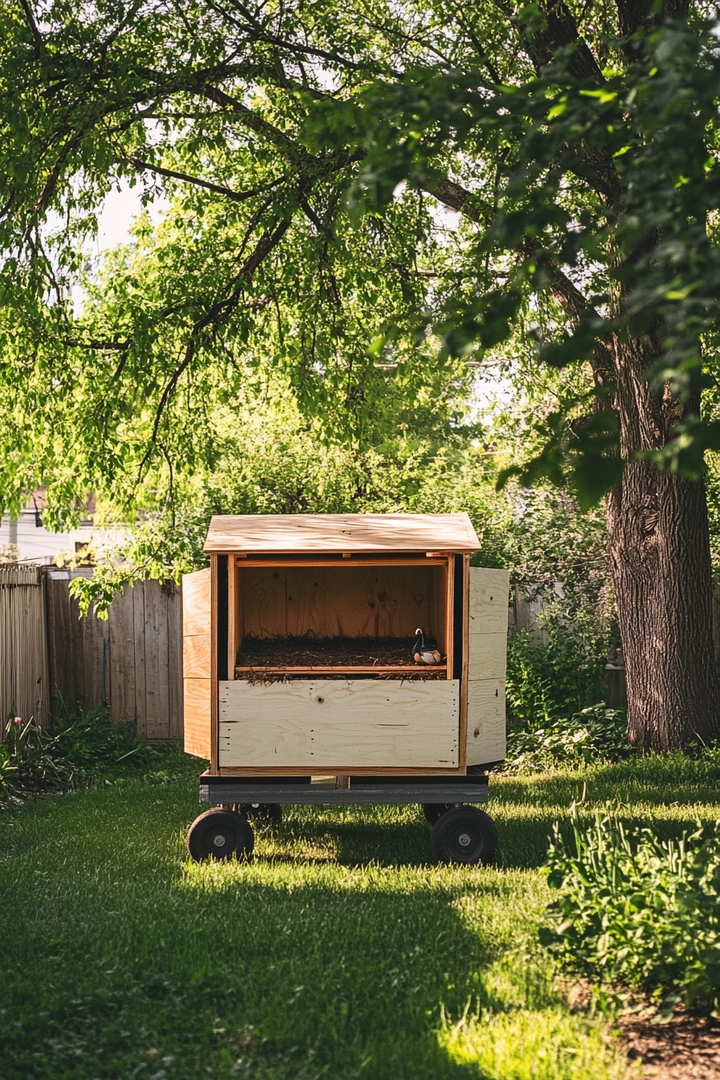
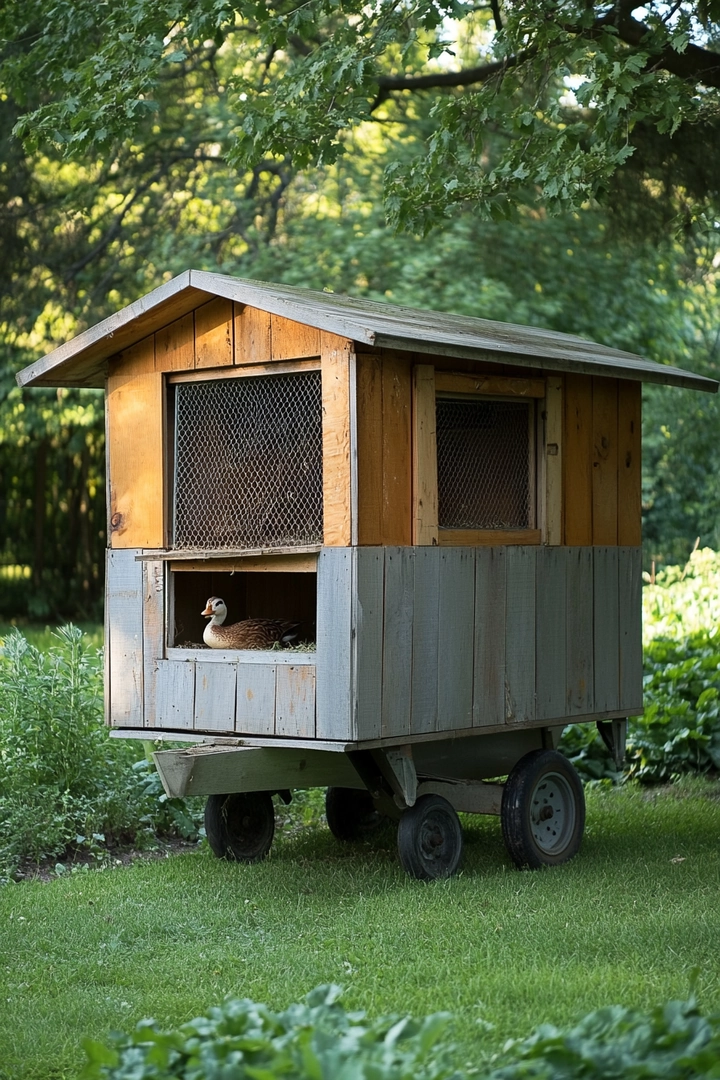
5. Practical Duck House from Upcycled Materials

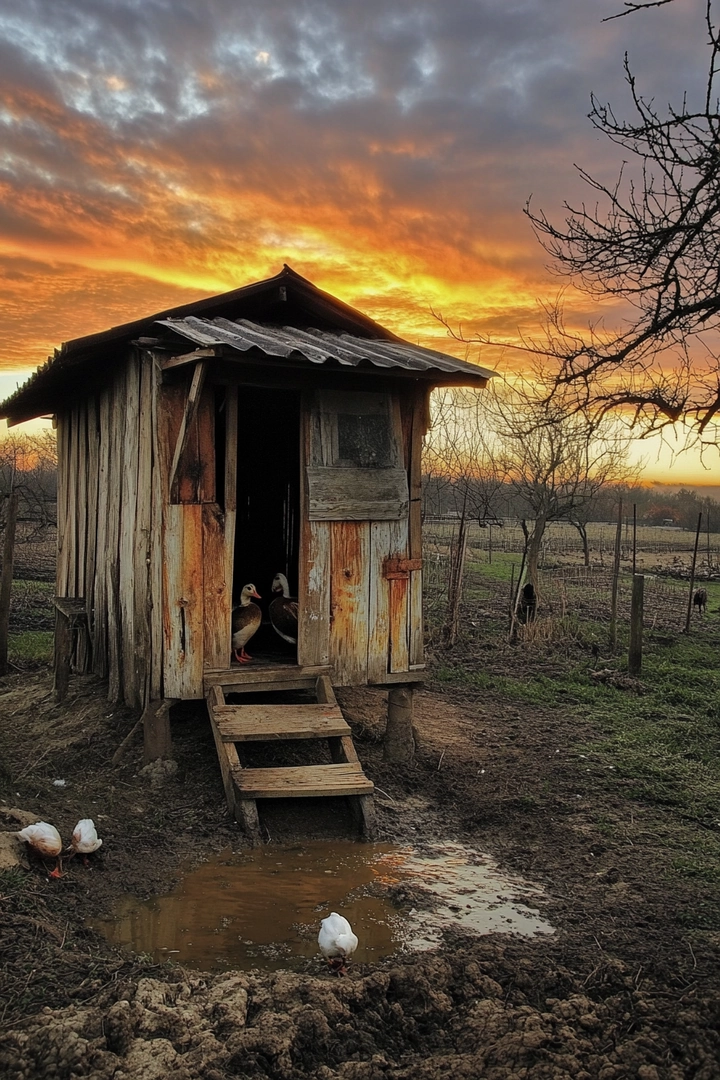
This practical duck house utilizes upcycled materials, showcasing how creativity can transform everyday items into functional structures. To build this coop, gather materials such as old doors, pallets, and other scrap wood.
The structure can be designed to include a small ramp leading to a muddy area where ducks can enjoy preening and bathing.
Located in a corner of a rural backyard, this coop provides a rustic charm while being functional for your ducks. Ensure that the house is well-ventilated and offers enough space for the ducks to move freely.
The ramp should be sturdy and easy for the ducks to navigate, as they may require some encouragement to use it at first.
- Use non-toxic paints or stains to finish the coop if desired, ensuring it’s safe for your ducks.
- Incorporate a drainage system to keep the muddy area from becoming too waterlogged.
- Monitor the ducks’ usage of the ramp, making adjustments as needed for their comfort and safety.
- Share your upcycling journey on social media to inspire others to think creatively about their homesteading projects.
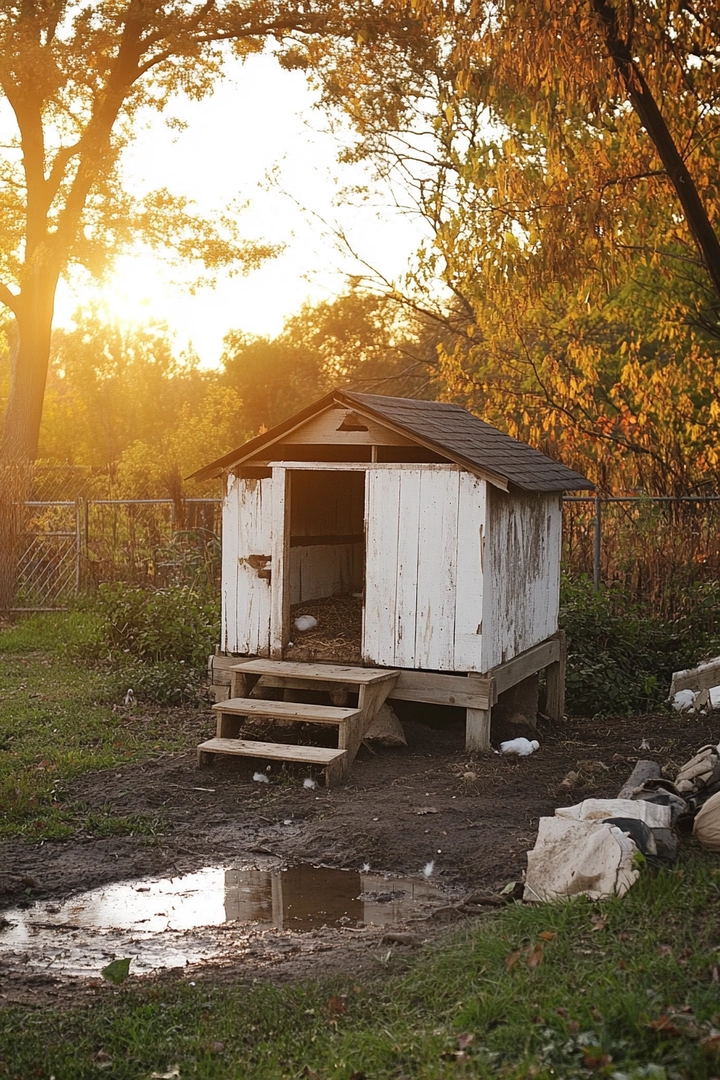

6. Backyard Duck Coop with Chicken Wire and Wooden Frames
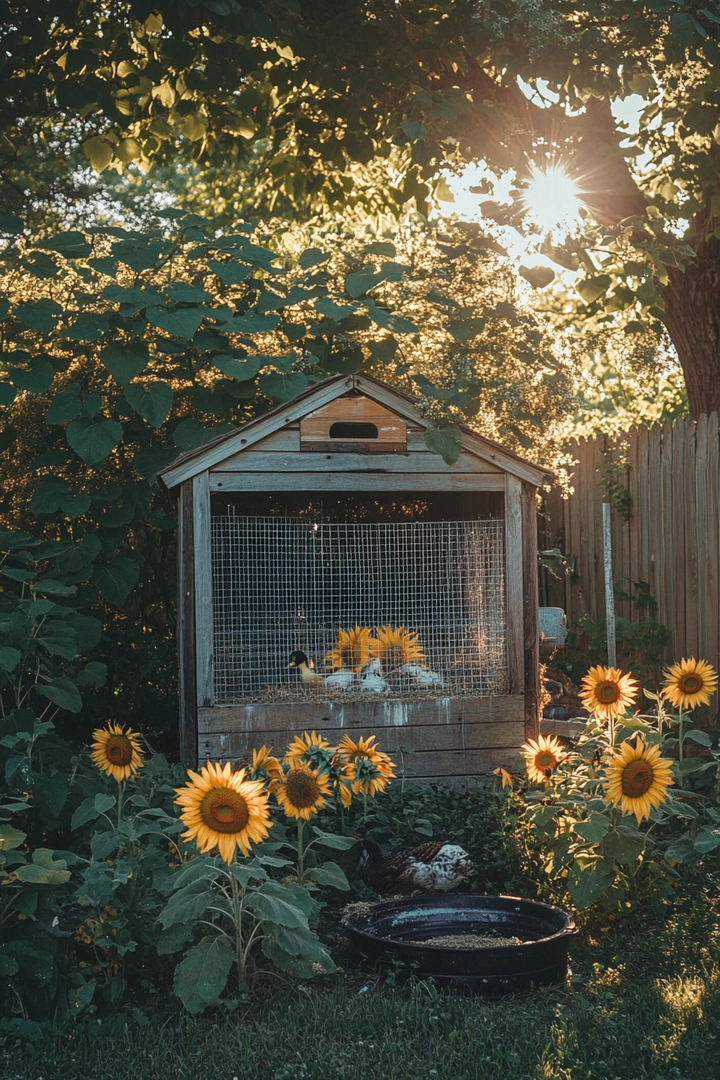
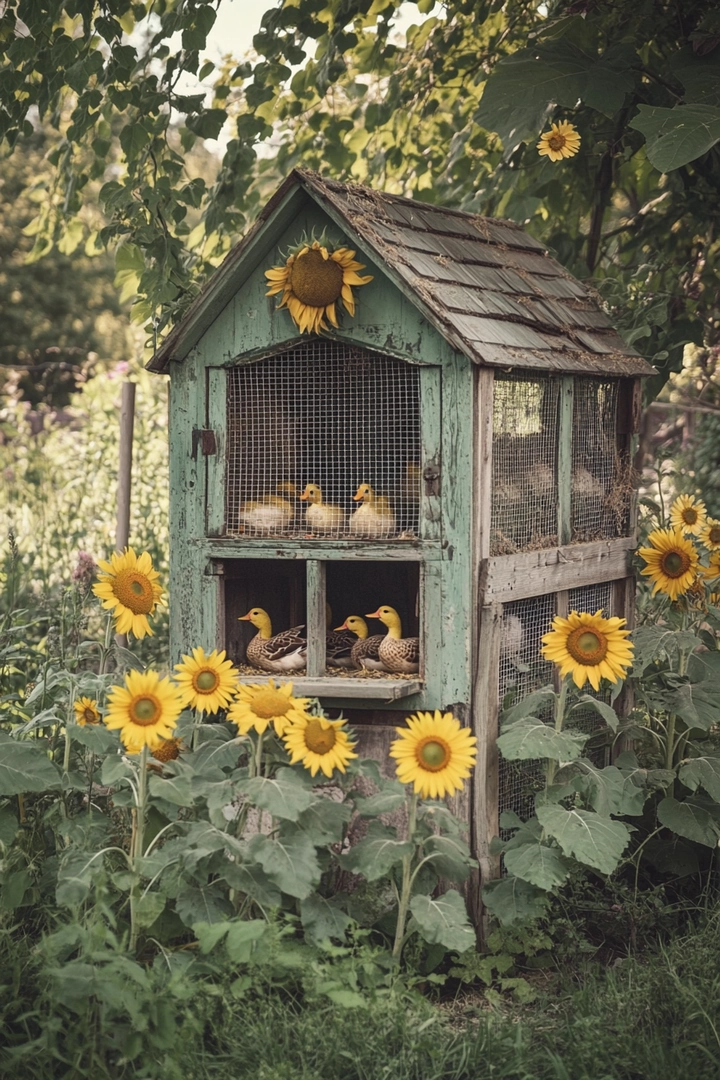
This backyard duck coop design utilizes chicken wire and wooden frames, making it an affordable yet effective solution for housing your ducks. The wooden frames provide a sturdy structure, while the chicken wire allows for air circulation and visibility.
This coop can be surrounded by sunflowers or other plants, creating a vibrant and welcoming environment for both the ducks and their caretakers.
Ensure the coop has a small water bowl to keep the ducks hydrated, especially during warm weather. The design should also include a shaded area to protect the ducks from overheating.
Positioning the coop in a sunny spot will enhance the health of the ducks, as they enjoy basking in the sun and foraging for insects.
- Ensure the chicken wire is securely fastened to prevent any escape or predation.
- Regularly check the coop for signs of wear or damage, especially after harsh weather.
- Incorporate a simple ramp for easy access to and from the coop.
- Document the ducks’ daily activities to better understand their needs and preferences.
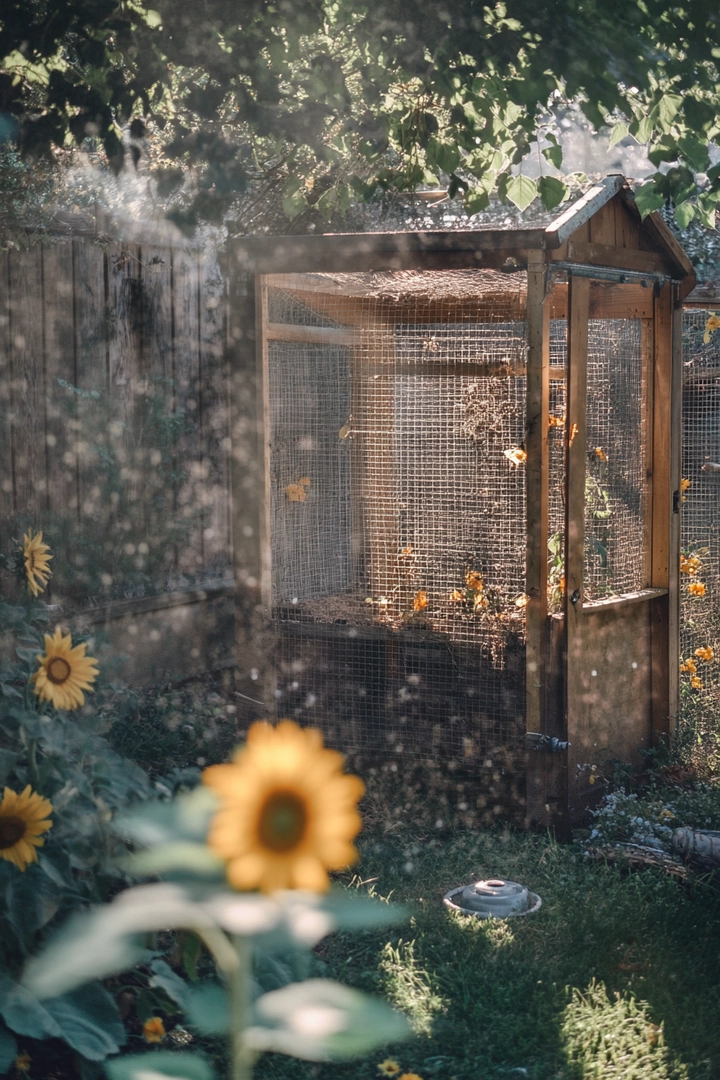
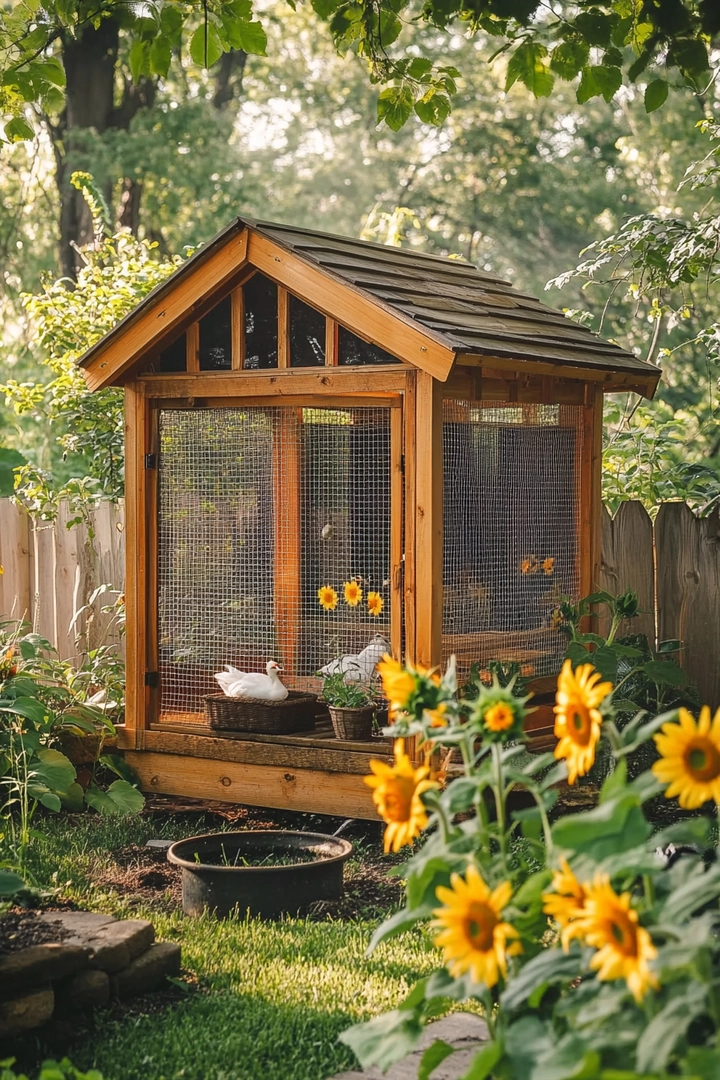
7. Affordable Duck Shelter from a Plastic Shed
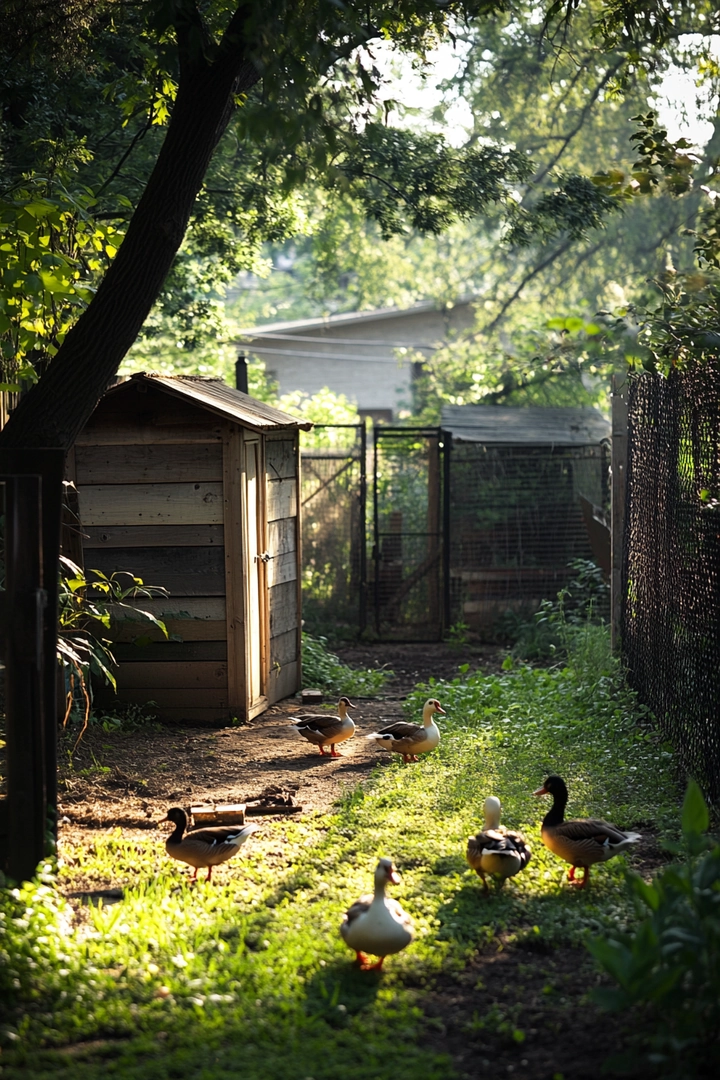
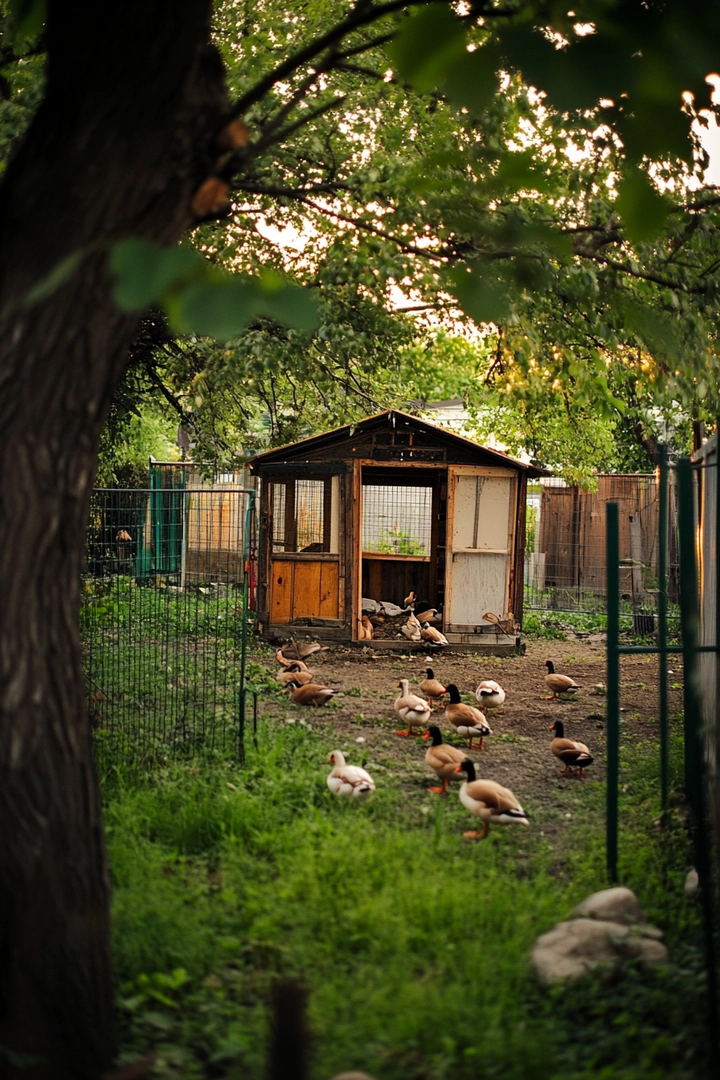
An affordable duck shelter can be built from a plastic shed, providing a practical solution for small urban backyards. These sheds are typically lightweight and easy to assemble, making them an ideal base for a duck coop.
The structure can be modified to include a fenced area where the ducks can roam freely, reducing the risk of predators and allowing for natural behaviors.
Inside the plastic shed, add bedding made from straw or hay to keep the ducks comfortable and warm. Ensure there’s adequate ventilation to maintain good air quality.
Ducks enjoy foraging, so placing the shelter near grassy areas will help them find food while enjoying their time outside.
- Look for plastic sheds that have UV protection to prevent degradation from sunlight.
- Secure the shed to the ground to avoid it being blown away in strong winds.
- Incorporate a small door for easy access during feeding and cleaning times.
- Consider sharing your duck shelter design with local community groups or online forums to inspire others.
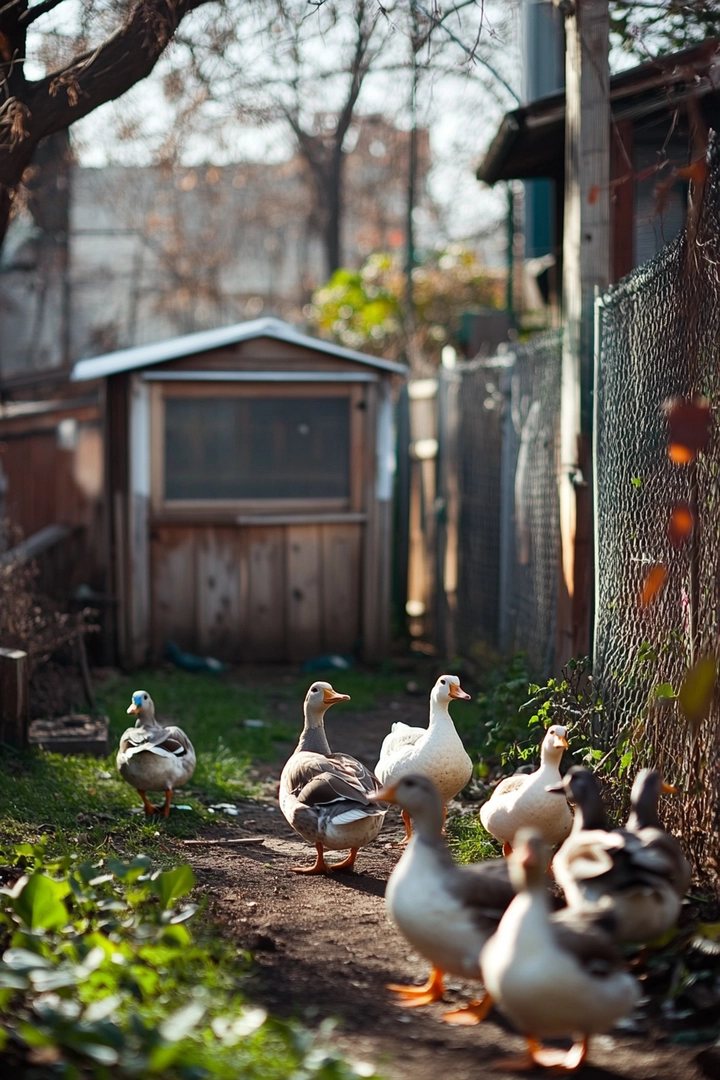
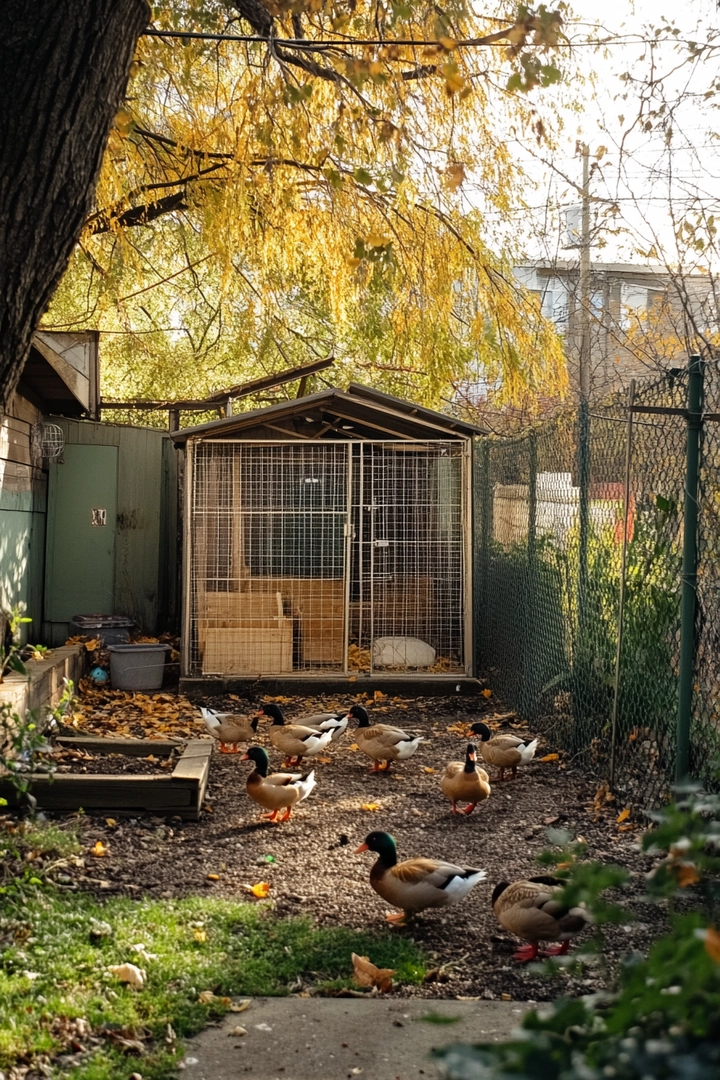
8. Makeshift Duck Coop with Cardboard Boxes and Tarps
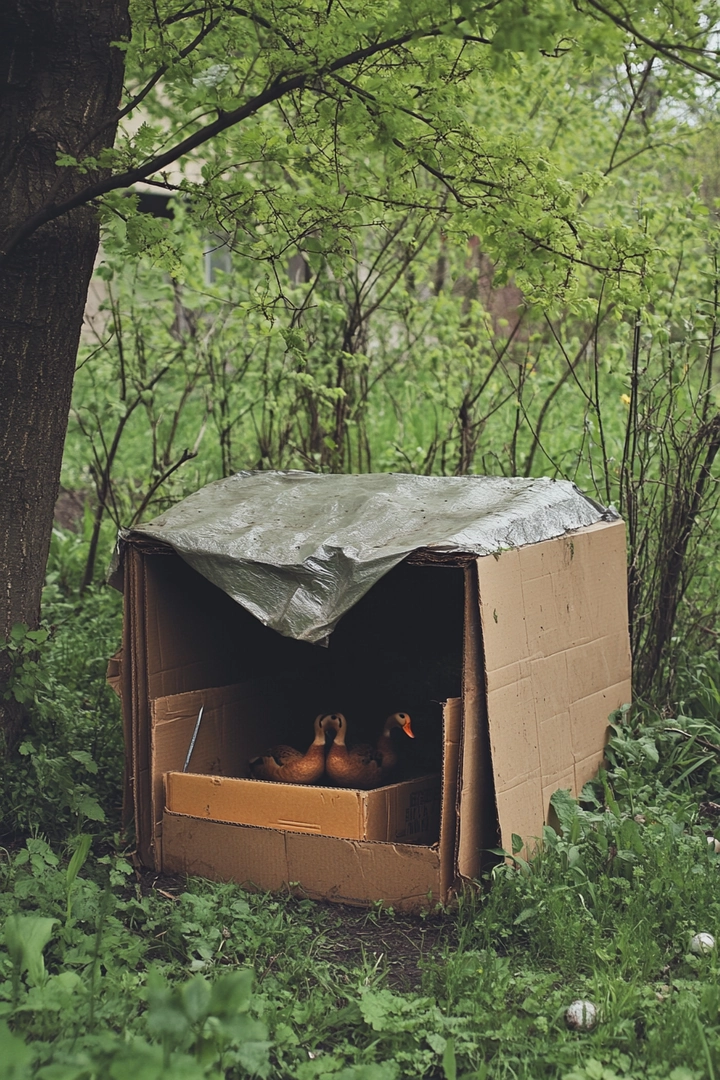
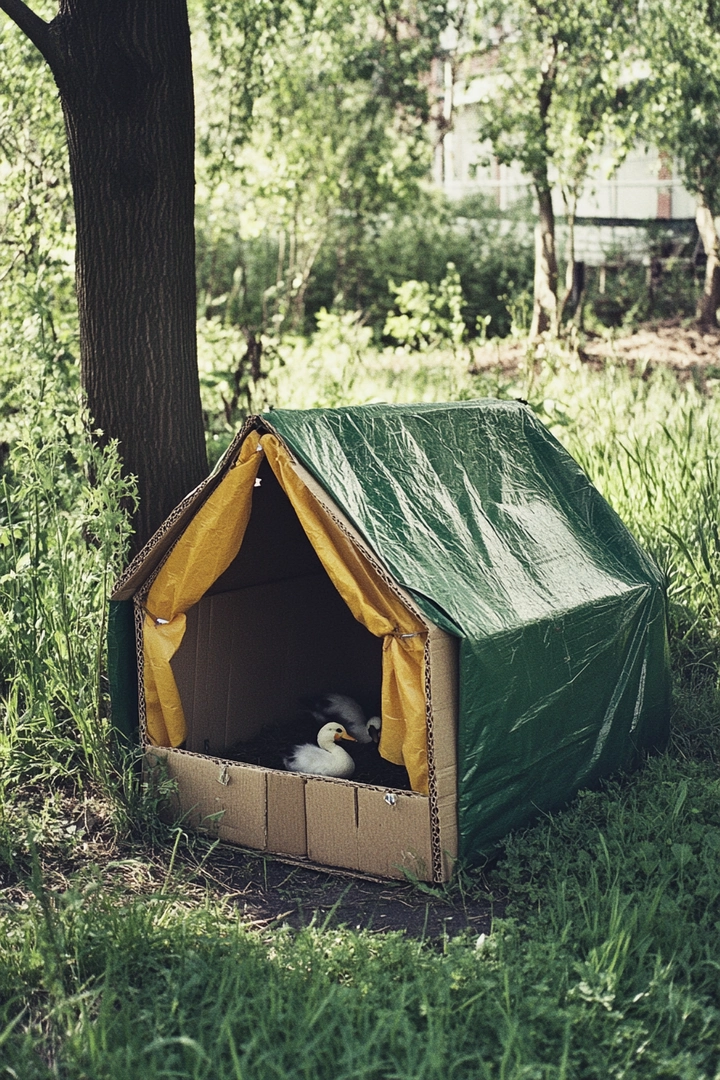
A makeshift duck coop constructed from cardboard boxes and tarps is a simple, temporary solution for those looking to start small. This setup is particularly useful for individuals who want to experiment with duck keeping before committing to a more permanent structure.
The cardboard boxes can be arranged to create a cozy space for the ducks, while tarps can provide protection from rain and wind.
Although this coop is not built to last, it can serve as a great introduction to duck care. Ensure that the ducks have access to fresh water and are monitored closely, as cardboard will not hold up well in wet conditions.
This design encourages creativity and resourcefulness, showcasing that homesteading can begin with minimal resources.
- Use heavy-duty tarps to enhance weather resistance and durability of the structure.
- Regularly check the condition of the cardboard to ensure it remains safe for the ducks.
- Consider this setup as a learning experience before investing in a more permanent coop.
- Document your experiences with this temporary setup to share tips and tricks with others.
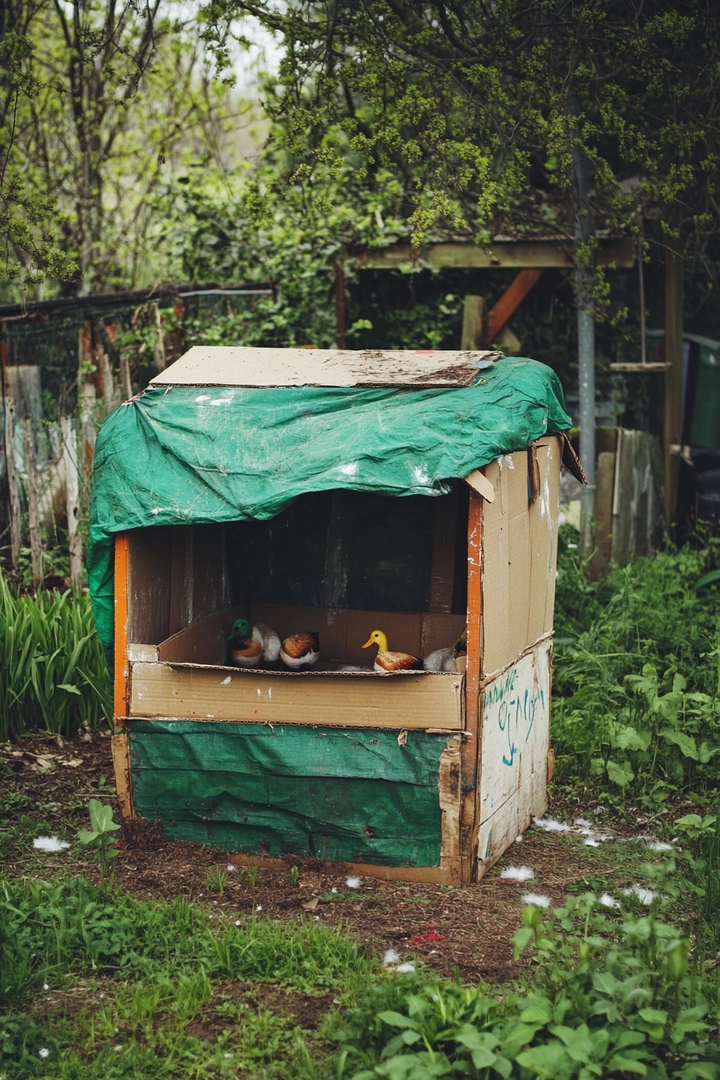
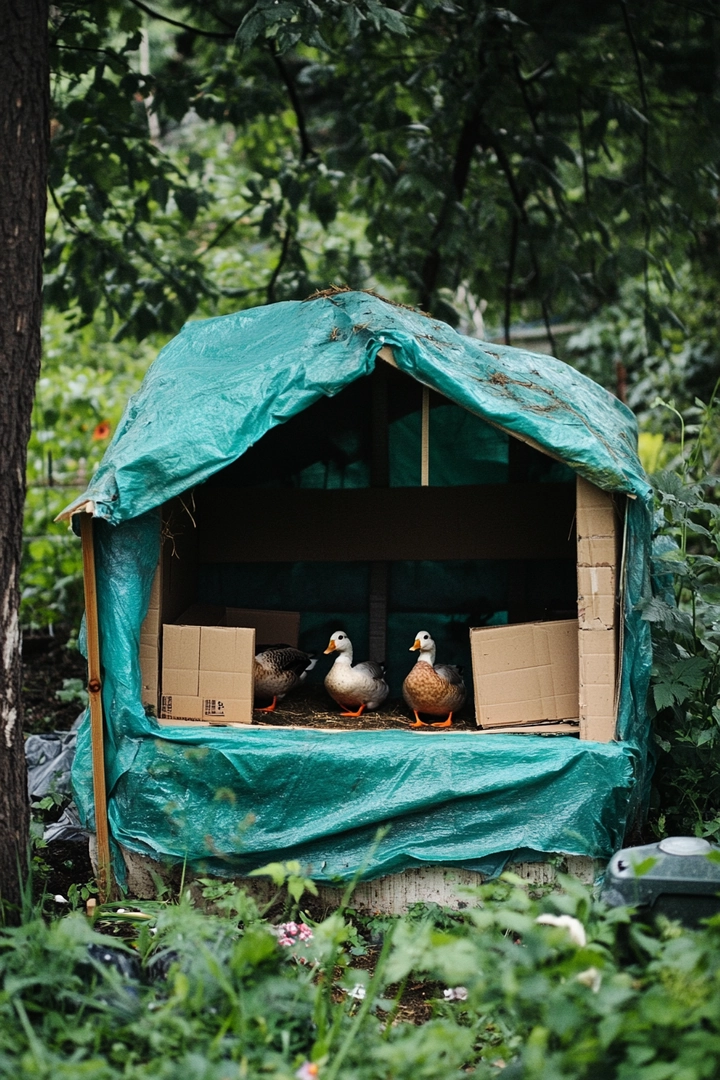
9. Rustic Duck Coop from Wooden Pallets and Tarp
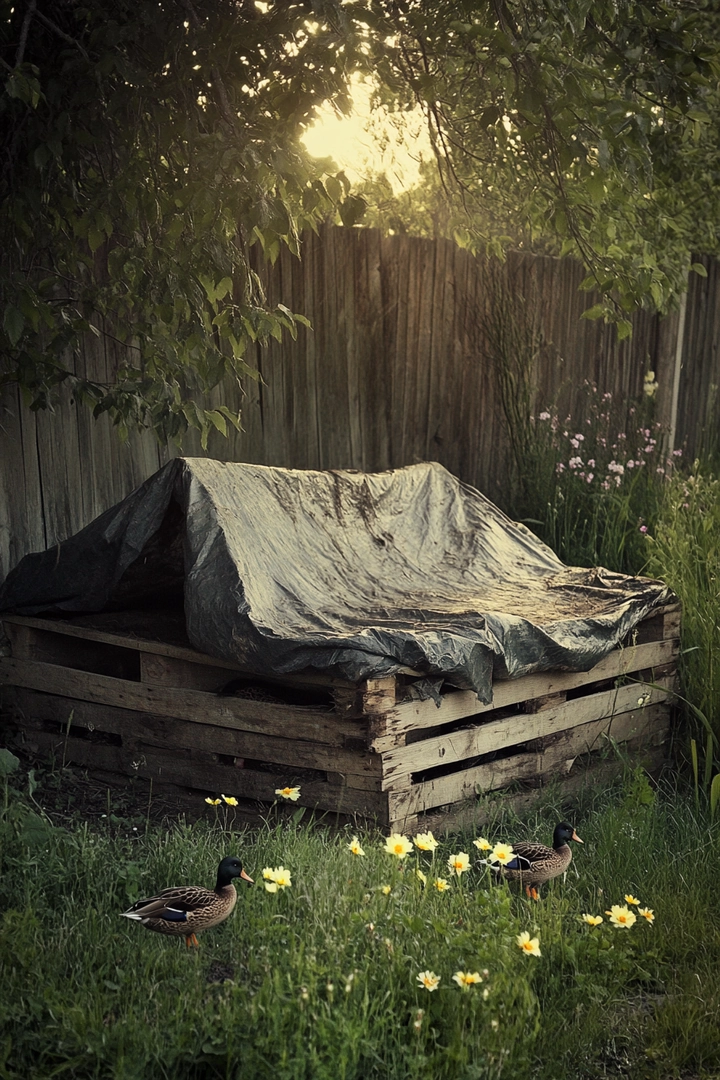
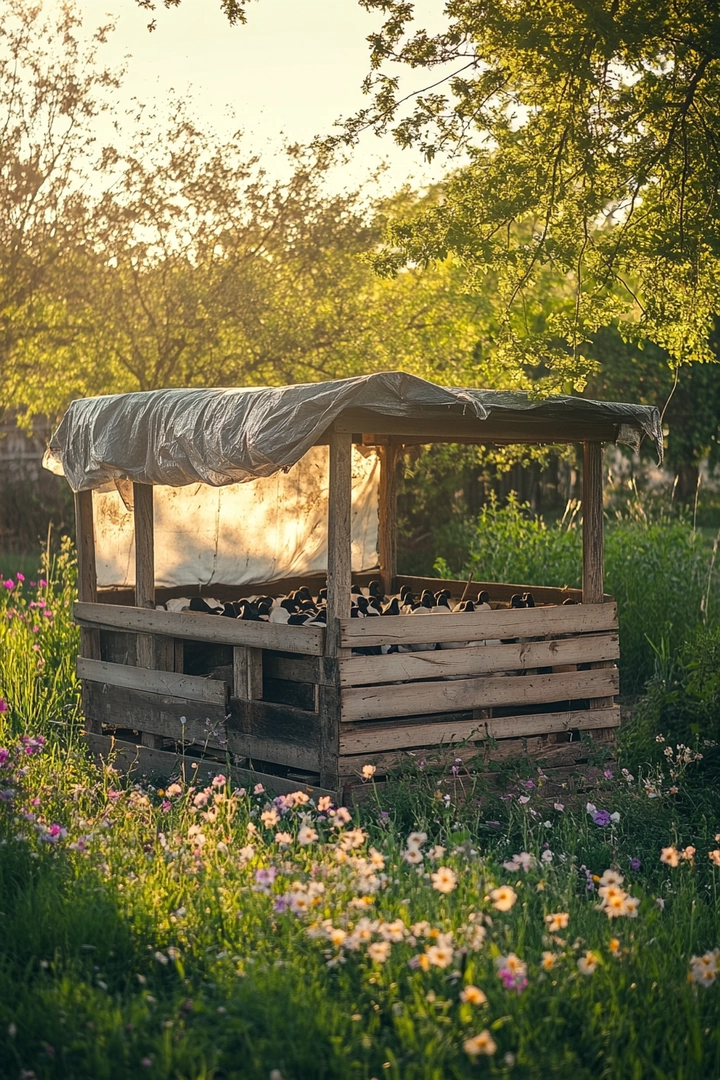
A rustic duck coop fashioned from wooden pallets and covered with a tarp offers a sturdy and reliable shelter for your ducks. The pallets create a solid base and walls, while the tarp provides an easy-to-assemble roof that protects from the elements.
This design allows for a comfortable nesting area and can be easily customized with additional features.
Positioning the coop in an area with blooming wildflowers adds to its charm and provides a natural habitat for the ducks. The wooden pallets can be painted or stained to enhance their aesthetic appeal, making the coop a pleasant addition to your backyard.
Ensure that the structure is secure and that the tarp is fastened well to prevent it from blowing away.
- Use a combination of nails and screws for a more durable construction.
- Incorporate small windows for ventilation and light while keeping predators out.
- Monitor the coop regularly to ensure it remains stable and secure.
- Share your rustic design online to inspire others to create their own unique setups.
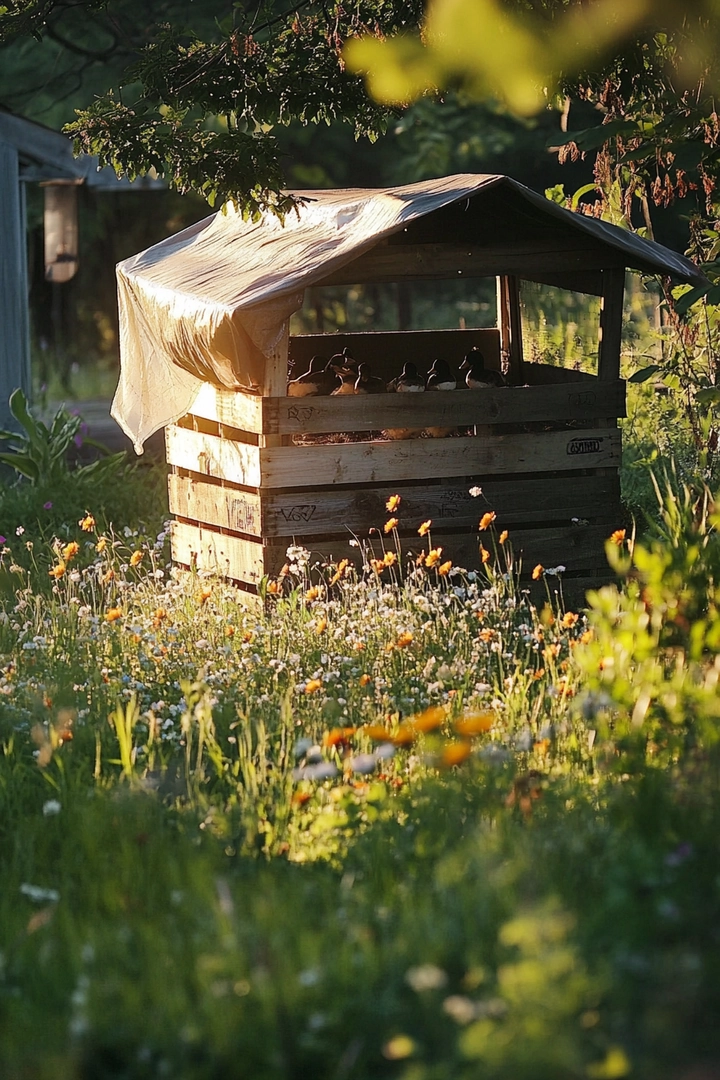
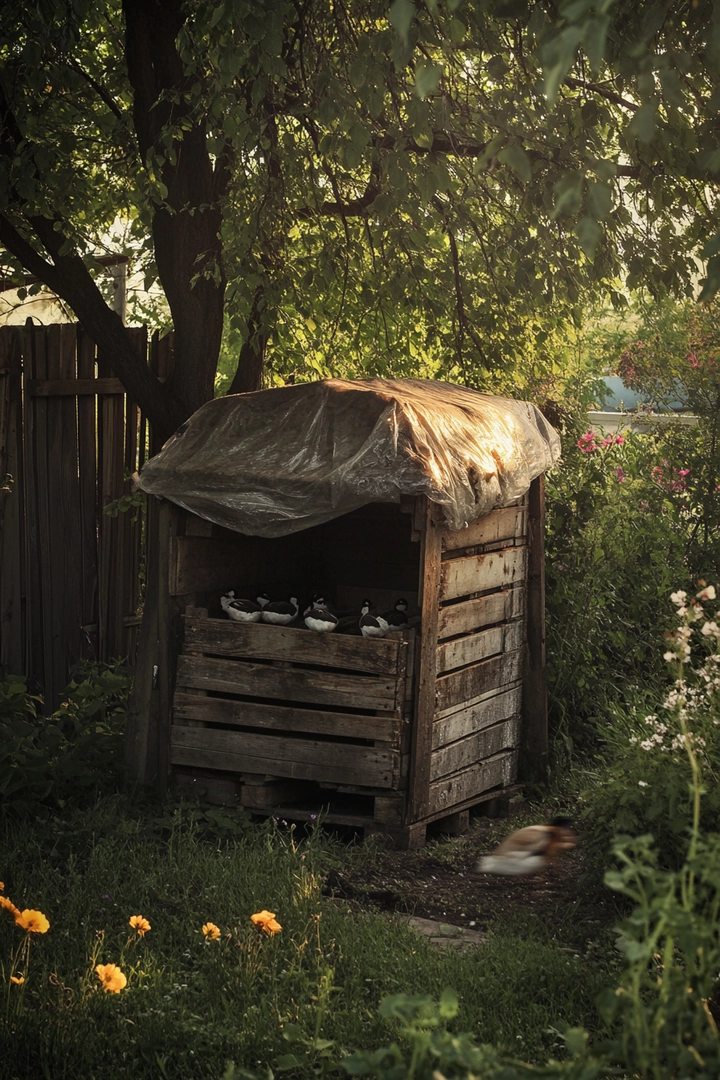
10. Budget-Friendly Duck Coop from a Repurposed Doghouse
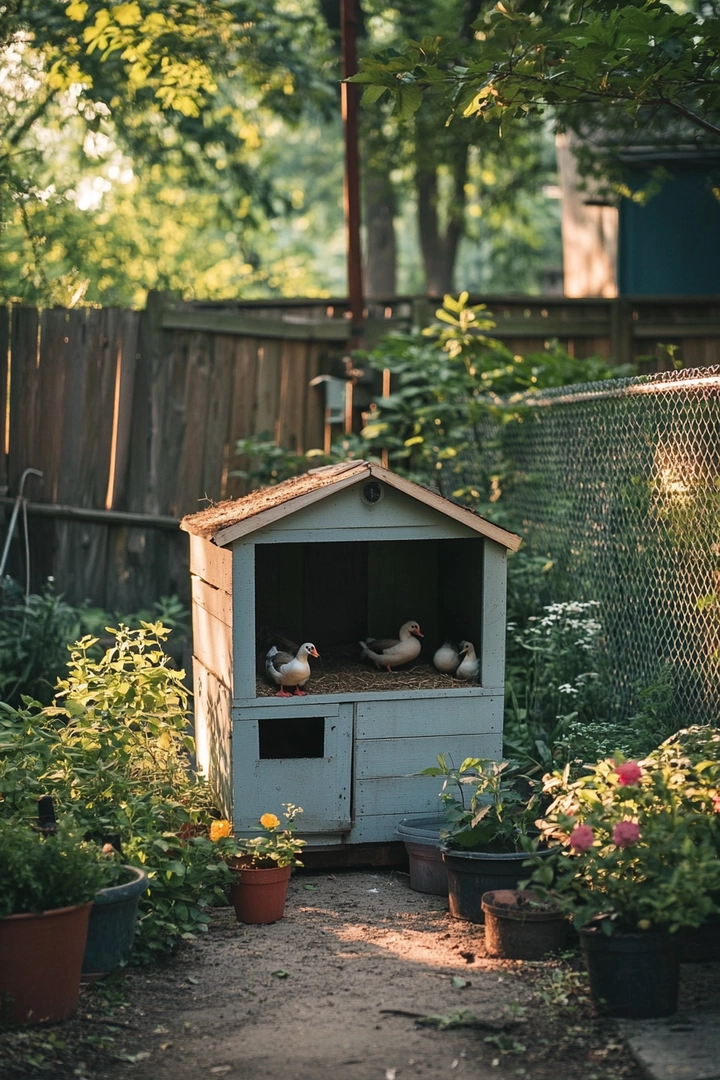

A budget-friendly duck coop can be constructed from a repurposed doghouse, offering a practical solution for suburban yards. This design utilizes an existing structure, reducing costs and waste.
Ensure that the doghouse is cleaned thoroughly before introducing the ducks, as it needs to be a safe and hygienic space.
To modify the doghouse for ducks, create a small door for their entry and exit, along with a shaded area for resting. The coop should be placed in a location where the ducks can access grass and forage for insects.
This setup allows for easy maintenance, as doghouses are typically designed for simple cleaning and upkeep.
- Inspect the doghouse for any signs of damage or rot before use.
- Make sure the entrance is low to accommodate the ducks’ height and ease of access.
- Add bedding inside to ensure comfort and warmth during colder months.
- Document any modifications you make to the doghouse to share your creative repurposing ideas.
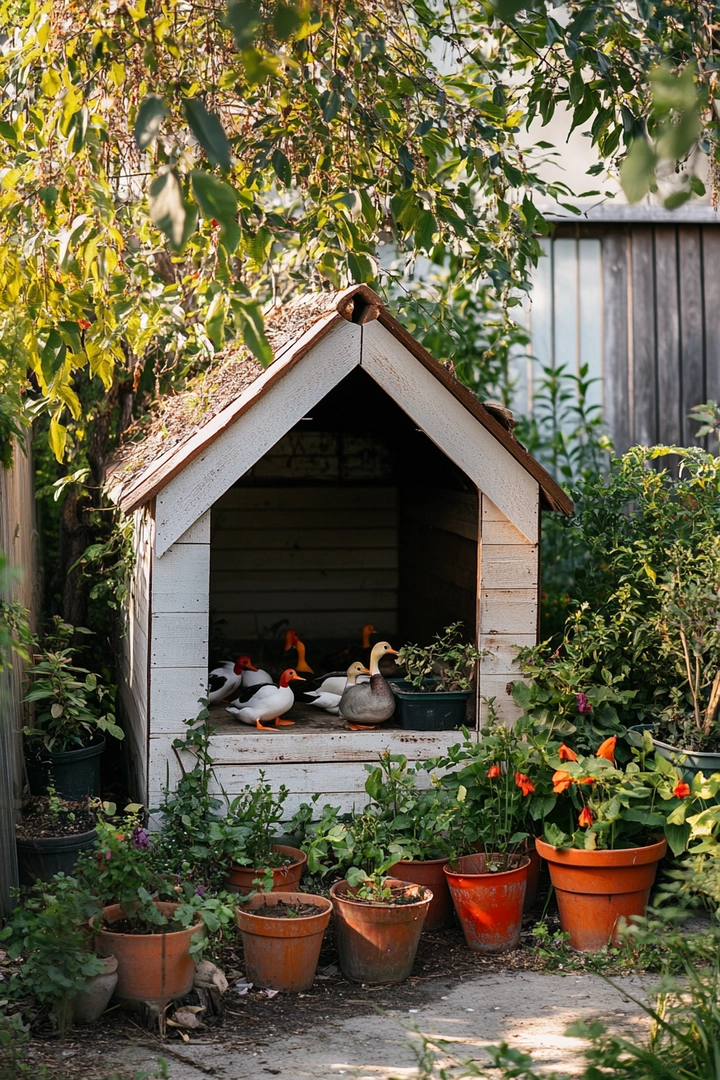

11. Duck Coop from Scrap Wood and Mesh
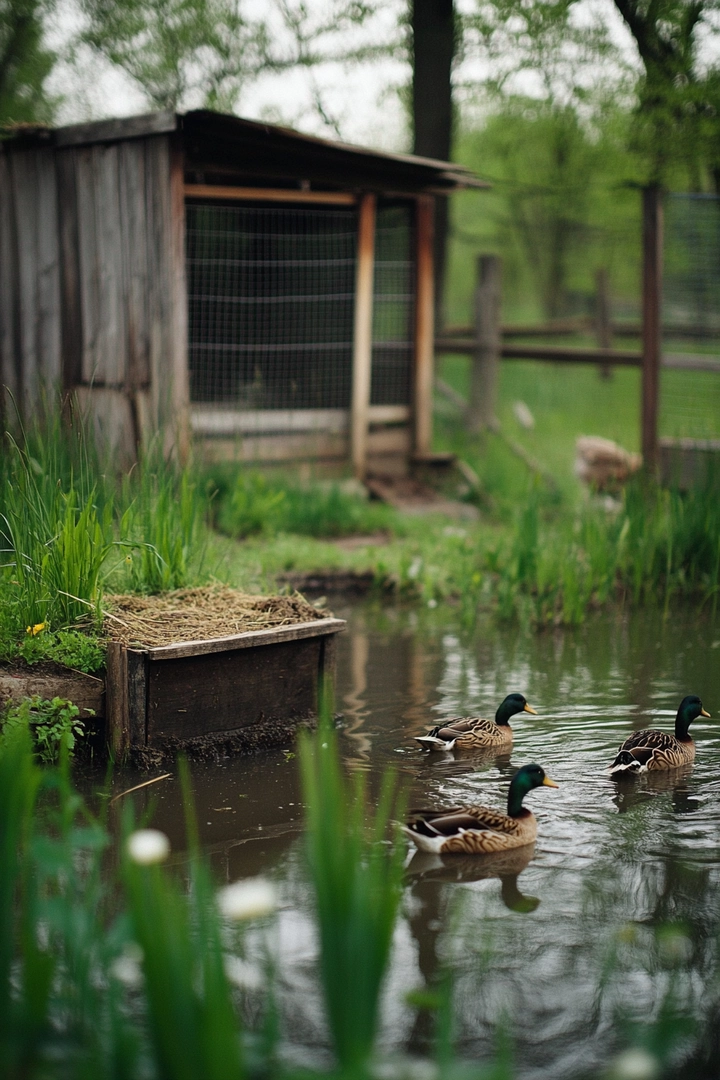

A duck coop built from scrap wood and mesh offers a sturdy and secure environment for your ducks. This design is particularly effective for rural homesteads, where access to materials is often easier.
The scrap wood can be fashioned into a solid structure, while the mesh provides ventilation and protection against predators.
Positioning the coop near a small pond enhances the ducks’ living environment, allowing them to engage in natural behaviors. Ensure that the coop has adequate space for the ducks to move around and rest comfortably.
Regularly check the structure for any signs of wear and replace any damaged materials as needed.
- Use a variety of wood pieces for a unique and rustic appearance.
- Install a secure latch on the door to keep the ducks safe from nighttime predators.
- Create a small area for dust bathing to keep the ducks healthy and clean.
- Share your experiences with building from scrap materials to encourage sustainability.
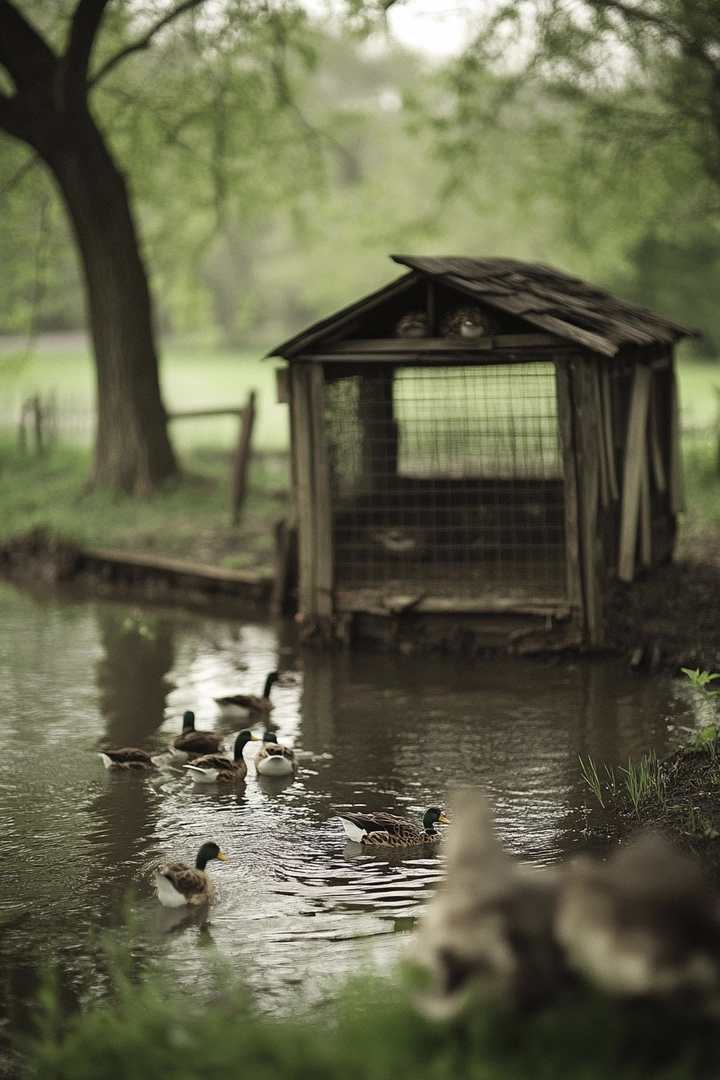

12. Simple Duck Coop from Crates and Wire Fencing
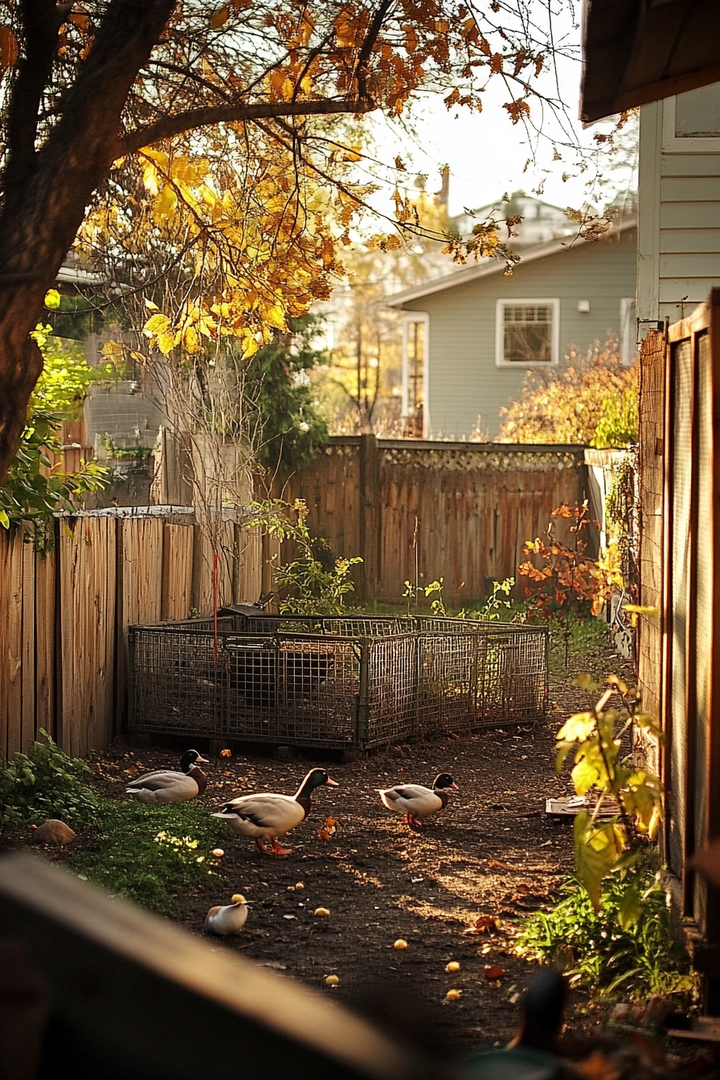
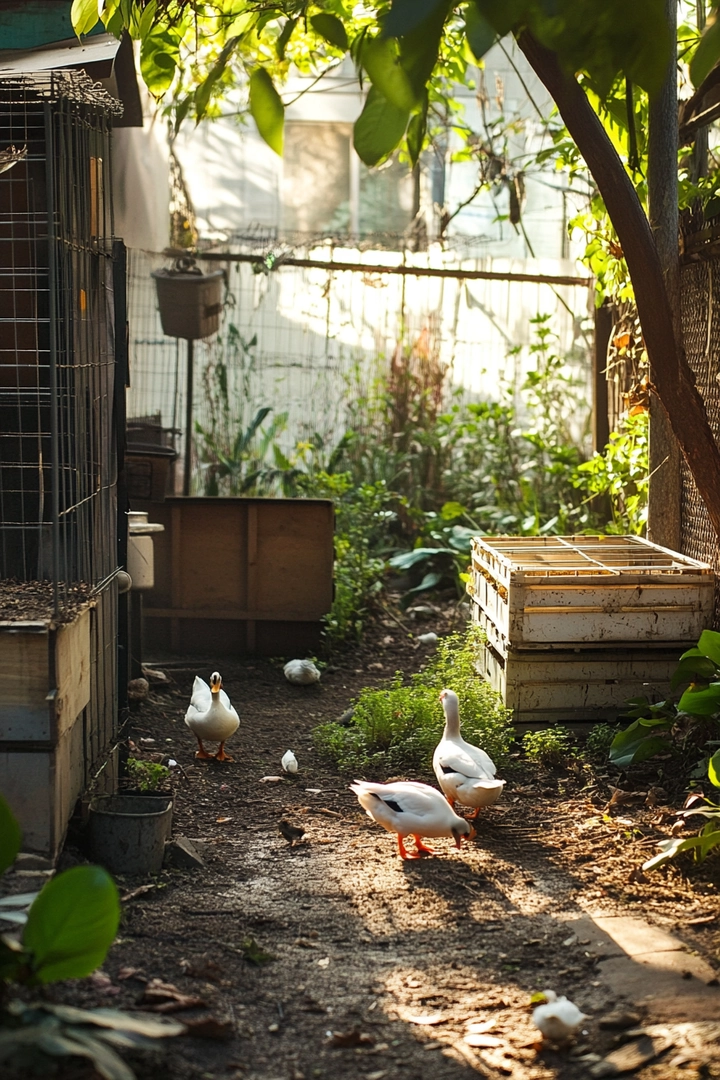
A simple duck coop design made from crates and wire fencing is a practical and affordable solution for those with limited space. This setup is easy to construct and can be tailored to fit your specific yard layout.
The crates serve as the main structure, while the wire fencing allows for airflow and visibility for the ducks.
Position the coop in a sunny area where the ducks can enjoy foraging. Make sure to provide fresh water and a shaded area to keep the ducks comfortable.
This design encourages natural behaviors and allows for easy monitoring of the ducks’ health and activity levels.
- Ensure that the wire fencing is securely fastened to prevent escape or predation.
- Regularly clean the crates to maintain hygiene and prevent any buildup of waste.
- Document the ducks’ habits to better understand their needs and preferences.
- Share your simple design with others to inspire them to start their own duck coops.
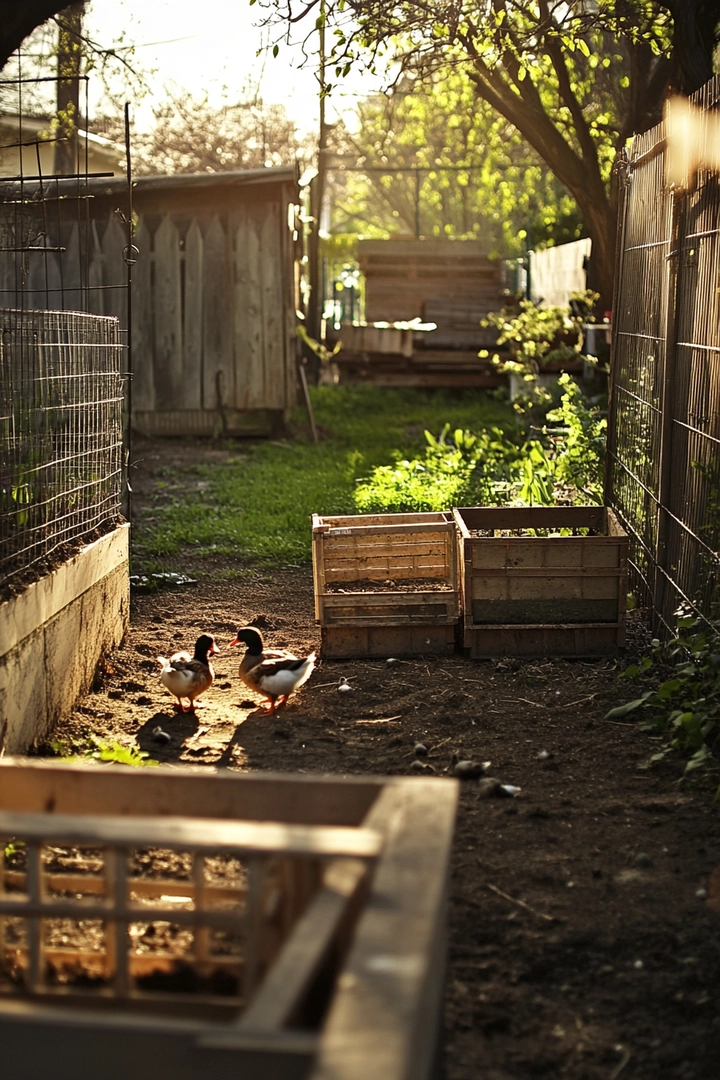
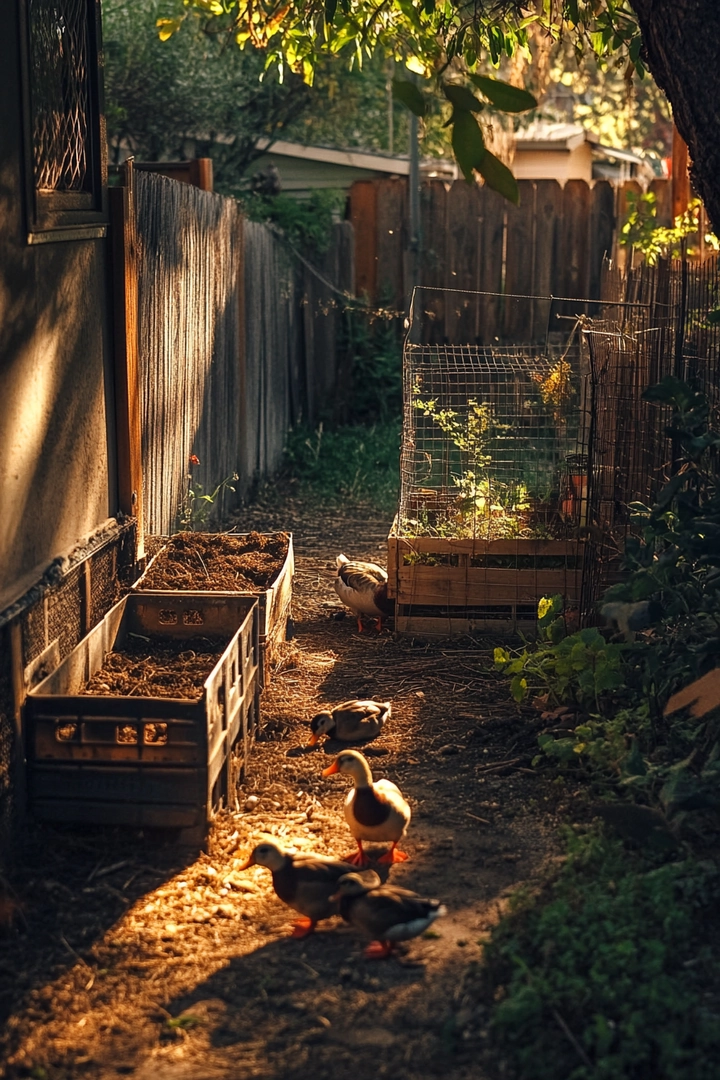
13. Economical Duck Coop from an Old Wooden Shed
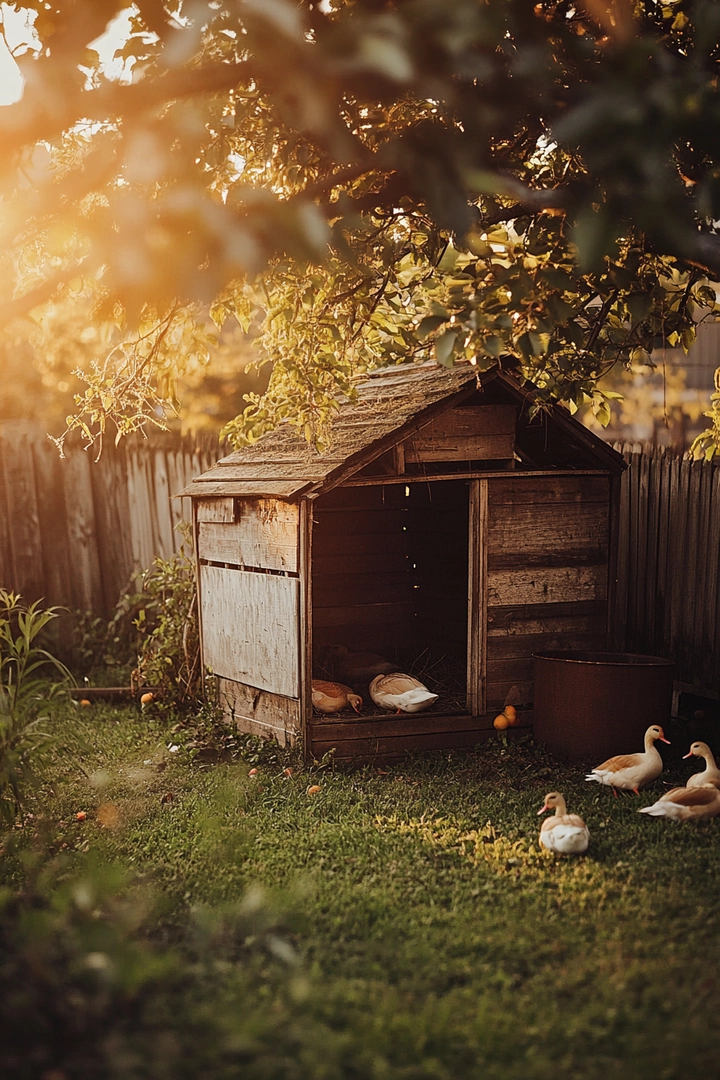
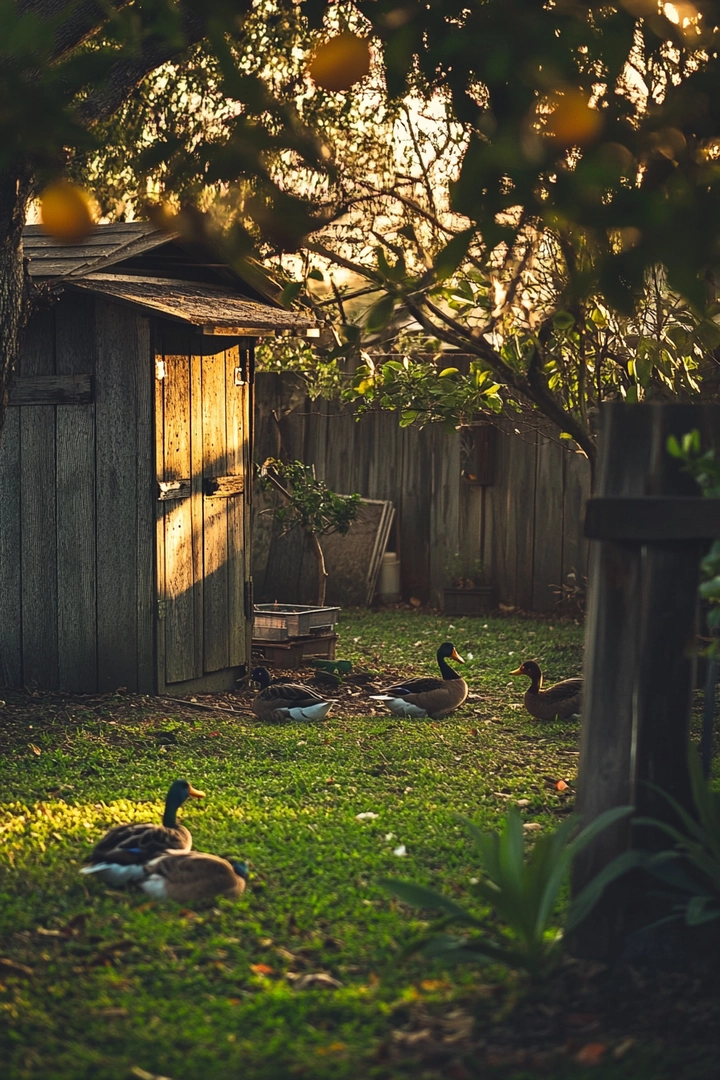
An economical duck coop can be fashioned from an old wooden shed, providing a durable and spacious environment for your ducks. This setup allows for plenty of room for the ducks to move around and includes the potential for nesting boxes.
Ensure the shed is cleaned and maintained to provide a healthy space for your ducks.
Positioning the coop in a suburban backyard with fruit trees adds to the aesthetic while offering additional food sources for the ducks. This design promotes natural foraging behaviors and helps maintain a clean environment by reducing waste buildup.
Ensure that the coop is secure and check for any signs of wear.
- Inspect the shed for any rot or damage before introducing the ducks.
- Add ventilation holes to keep the air fresh and comfortable.
- Ensure the nesting area is easily accessible for egg collection.
- Document the restoration process of the shed to share your journey with others.
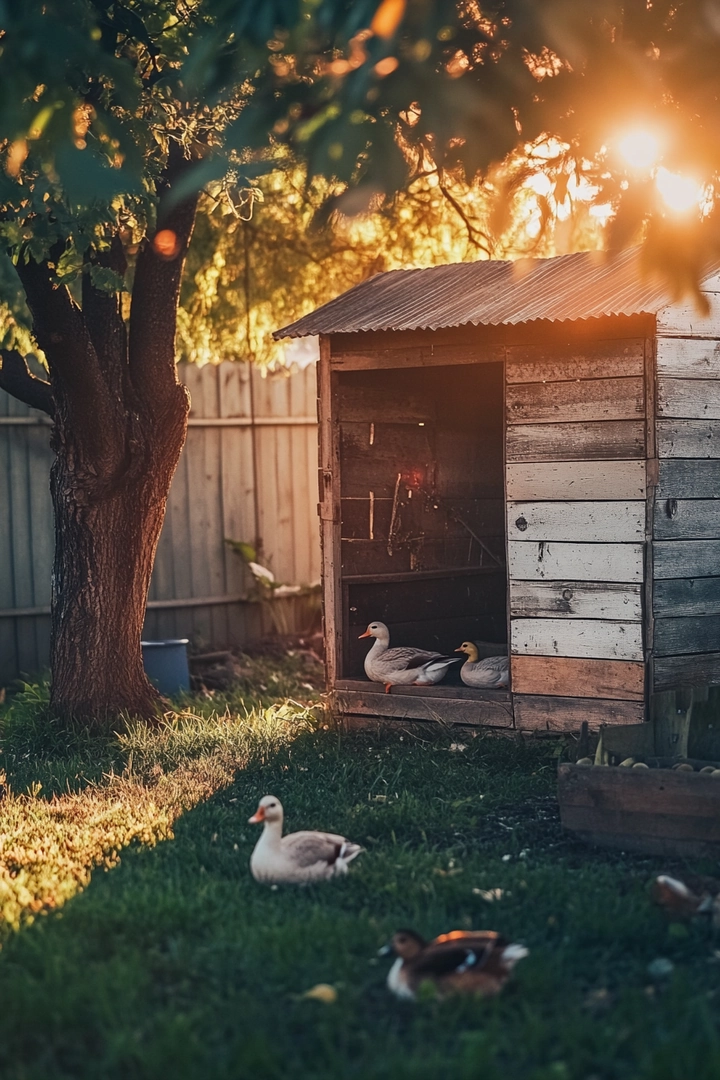
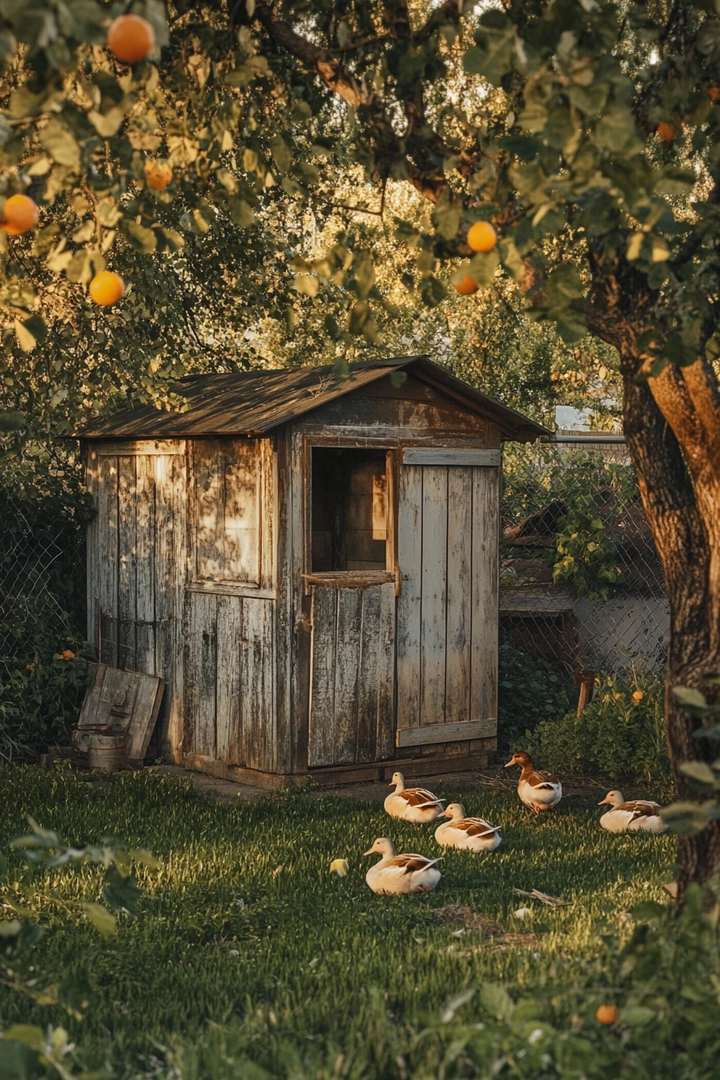
14. Makeshift Duck Coop from Old Pallets and Tarp
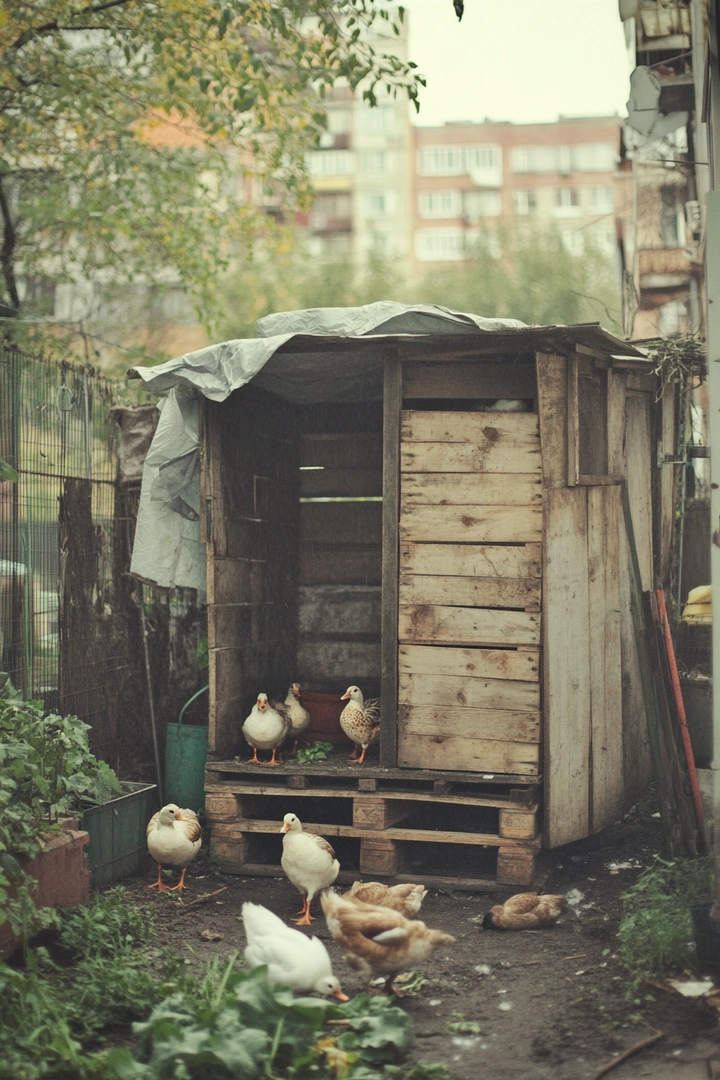
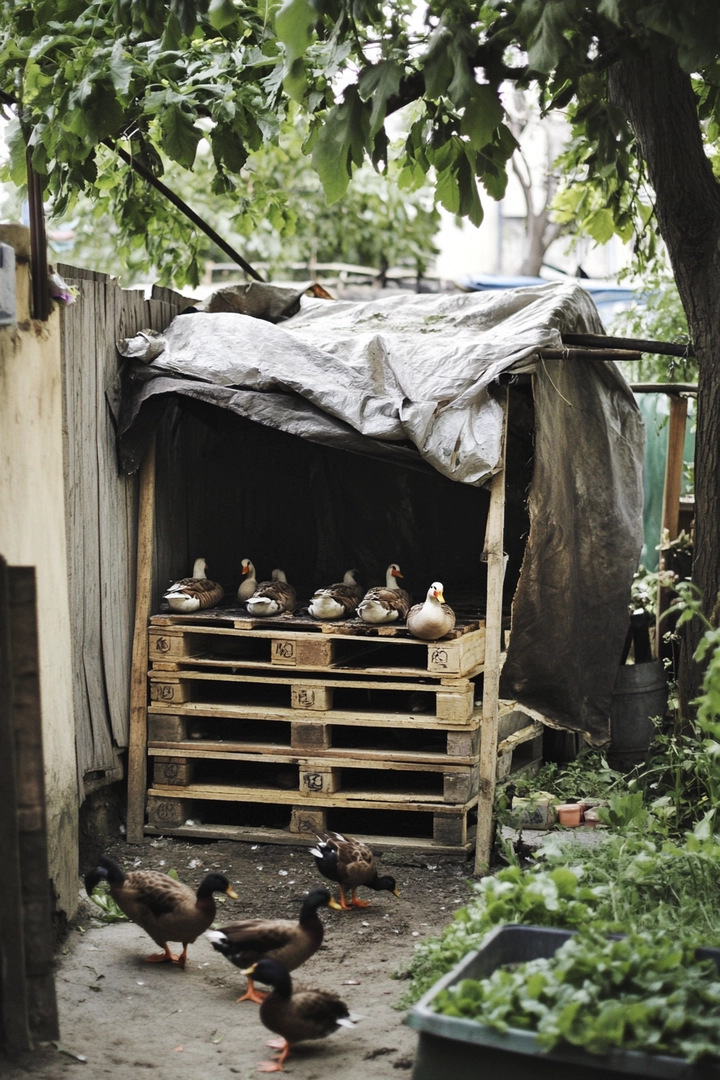
A makeshift duck coop using old pallets and a tarp provides a temporary yet functional shelter for your ducks. This simple design is perfect for those just starting their homesteading journey and looking for a quick solution.
The pallets can be arranged to create walls, while the tarp serves as a roof, protecting the ducks from the elements.
Positioning the coop in an urban yard with a small vegetable garden allows the ducks to forage for insects while contributing to a sustainable ecosystem. Regular monitoring of the coop will ensure the ducks remain safe and comfortable.
This setup encourages improvisation and creativity in your homesteading projects.
- Secure the tarp well to prevent it from blowing away in strong winds.
- Regularly check the pallets for signs of rot or damage.
- Consider this setup a temporary solution while planning for a more permanent coop.
- Document your makeshift process to inspire others to think outside the box.
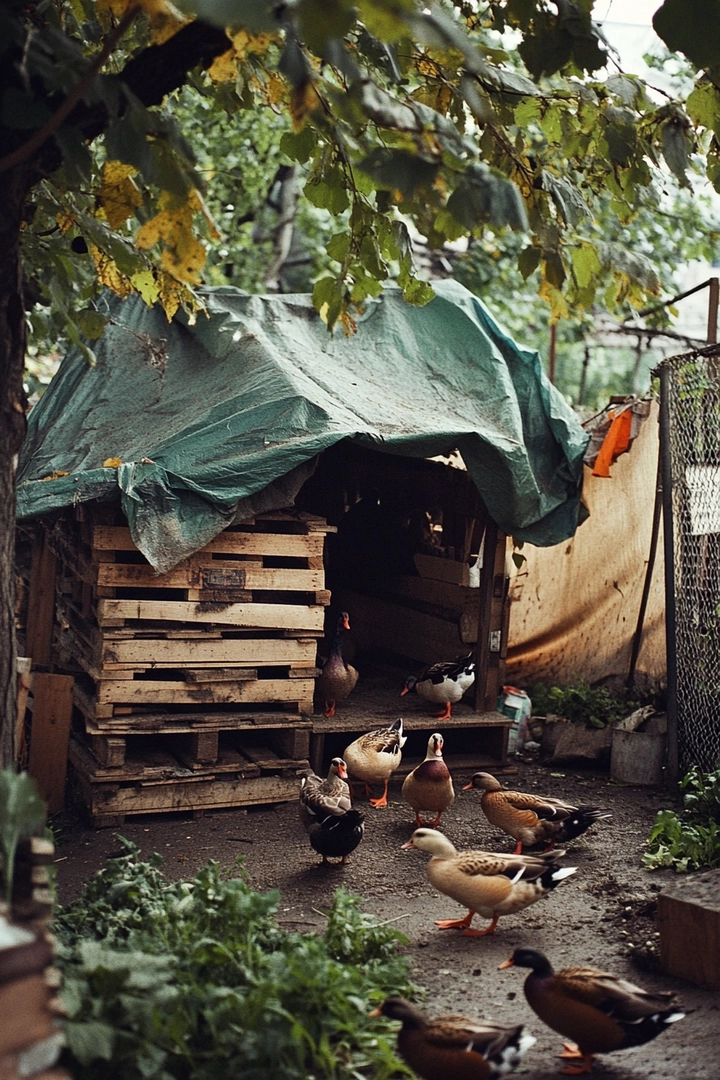
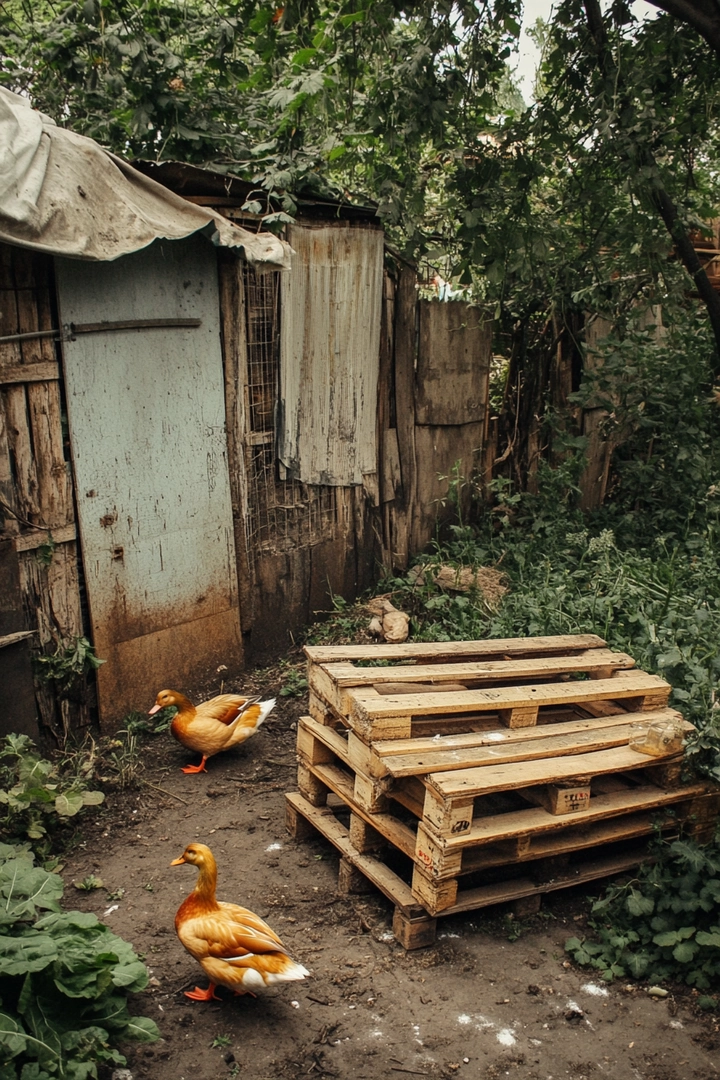
15. DIY Duck Coop from Wooden Crates in a Suburban Garden
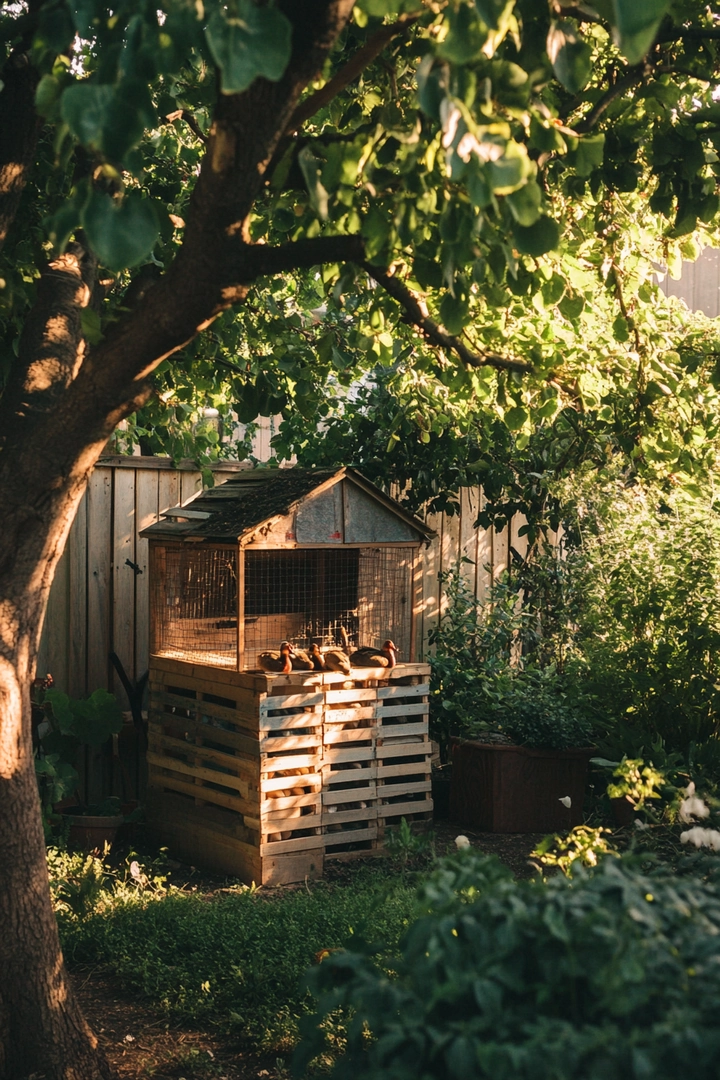
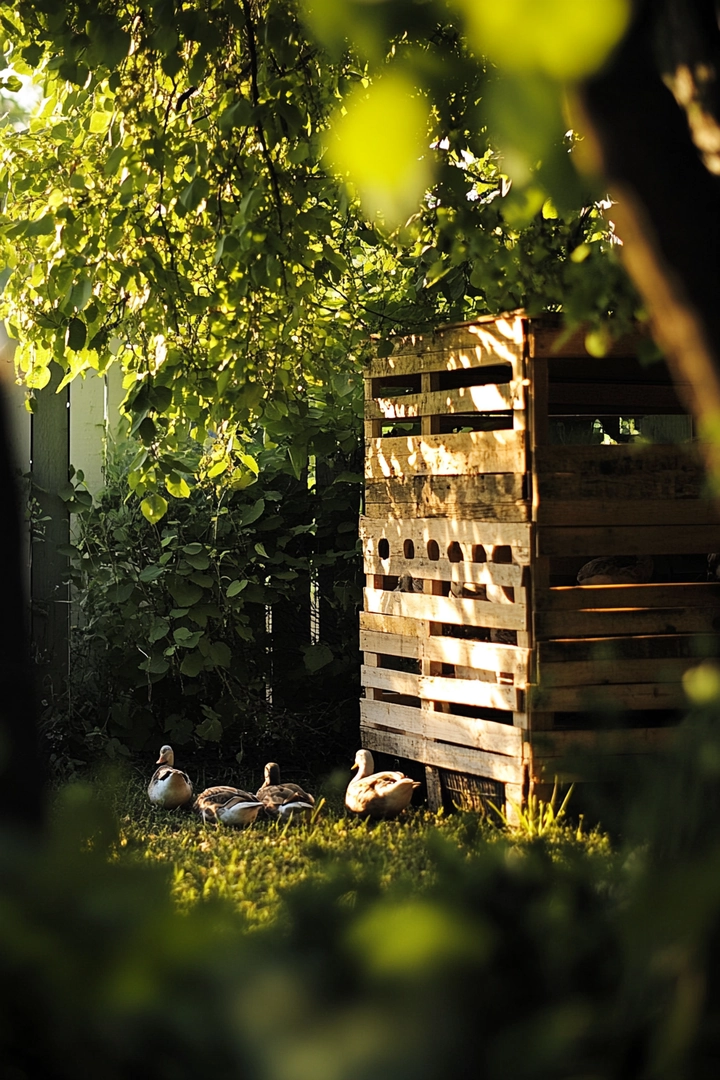
A DIY duck coop constructed from wooden crates can be nestled in a lush suburban garden, providing a cozy and shaded environment for your ducks. This design is easy to assemble and can be adapted to fit various garden layouts.
The crates can be stacked or placed side by side to create a sheltered area for the ducks.
Ensure that the coop is placed in a location where the ducks can enjoy natural foraging opportunities. Adding straw or hay as bedding will help keep the interior comfortable and reduce waste buildup.
Regular maintenance and monitoring will ensure the ducks remain healthy and happy.
- Choose crates that are sturdy and free from mold or rot.
- Incorporate a small water bowl for drinking and bathing.
- Document the ducks’ interactions with their environment to better understand their needs.
- Share your DIY project with local gardening clubs or online communities to inspire others.
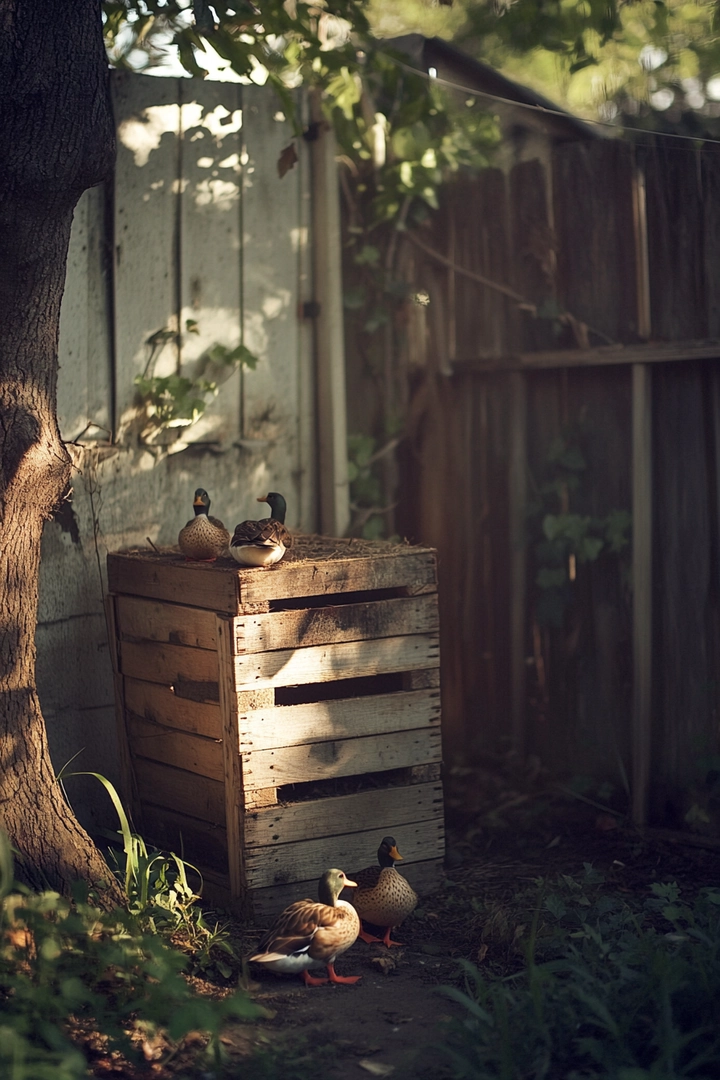
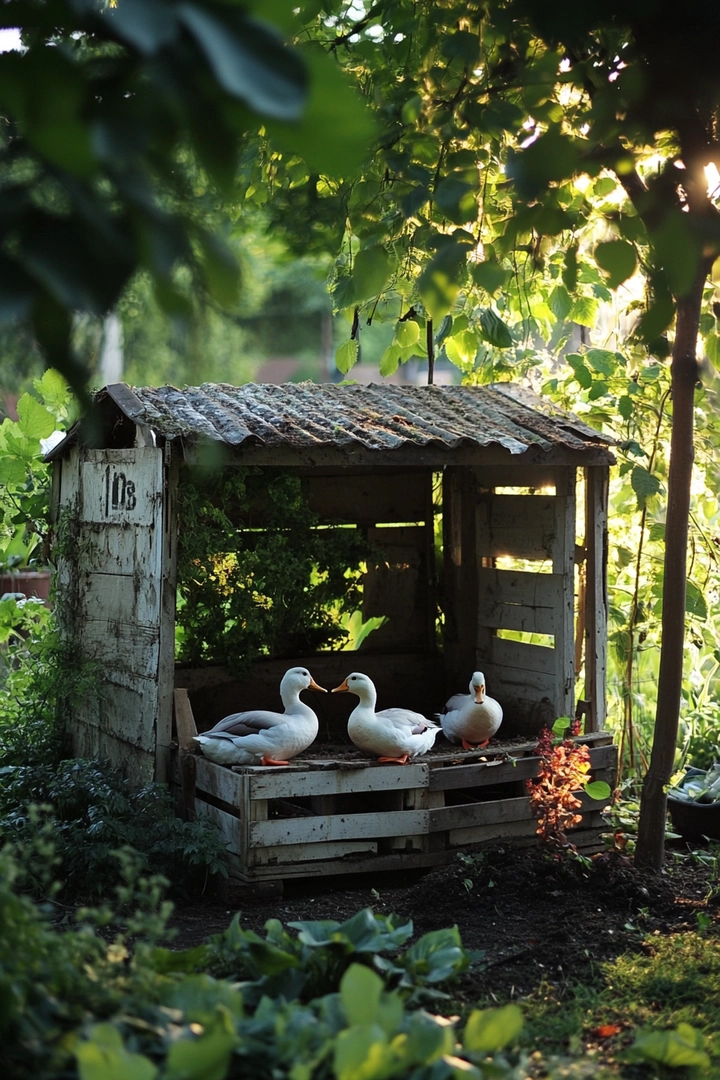
16. Duck Shelter from Hay Bales and Tarp
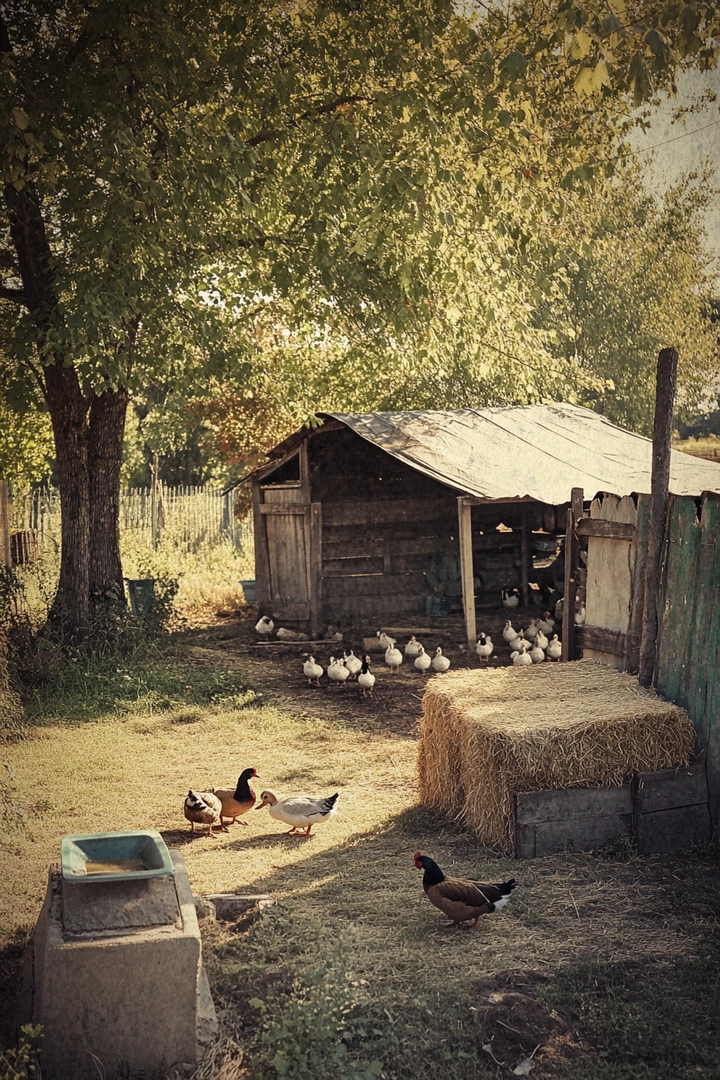
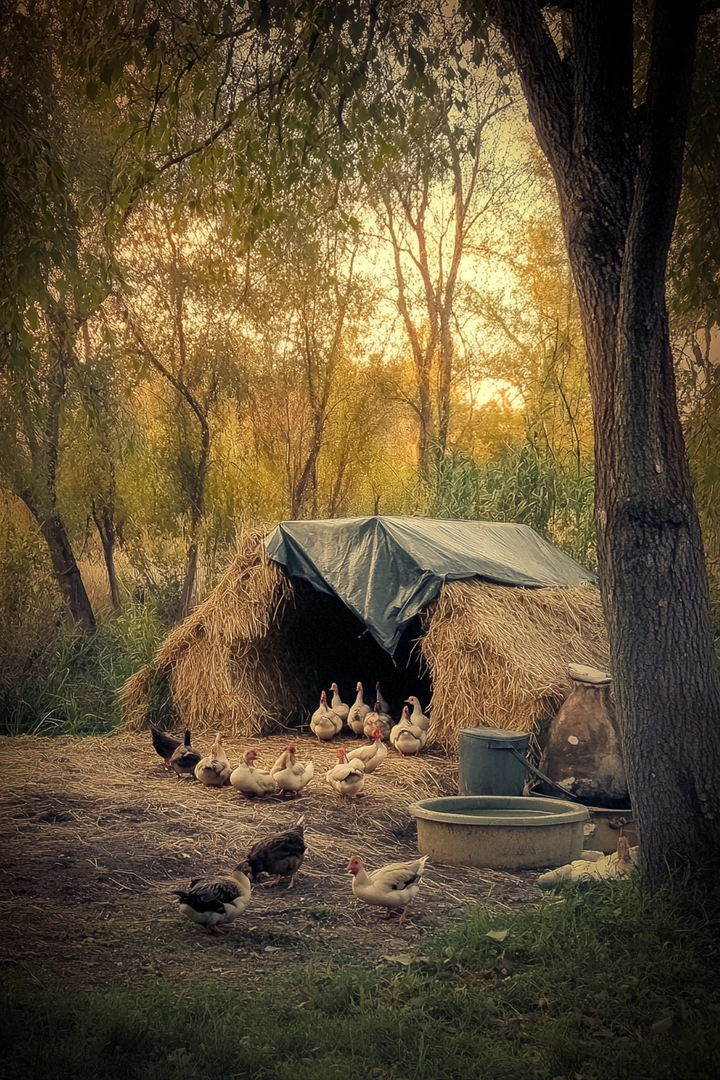
A practical duck shelter made from hay bales and a tarp offers a unique and budget-friendly solution for backyard duck keeping. This design is particularly useful for those looking for a temporary setup or for use during the warmer months.
The hay bales provide insulation and structure, while the tarp offers protection from rain and sun.
This shelter can be easily assembled in any backyard and can be adjusted to accommodate the number of ducks you have. Ensure that the interior remains dry and comfortable by regularly checking the condition of the hay.
This setup encourages natural behaviors, allowing the ducks to forage and explore their surroundings.
- Use heavy-duty tarps that can withstand weather conditions and UV exposure.
- Regularly monitor the hay for any signs of moisture or mold.
- Add a small water dish to provide hydration for the ducks.
- Document your experiences with this shelter to share with others interested in homesteading.
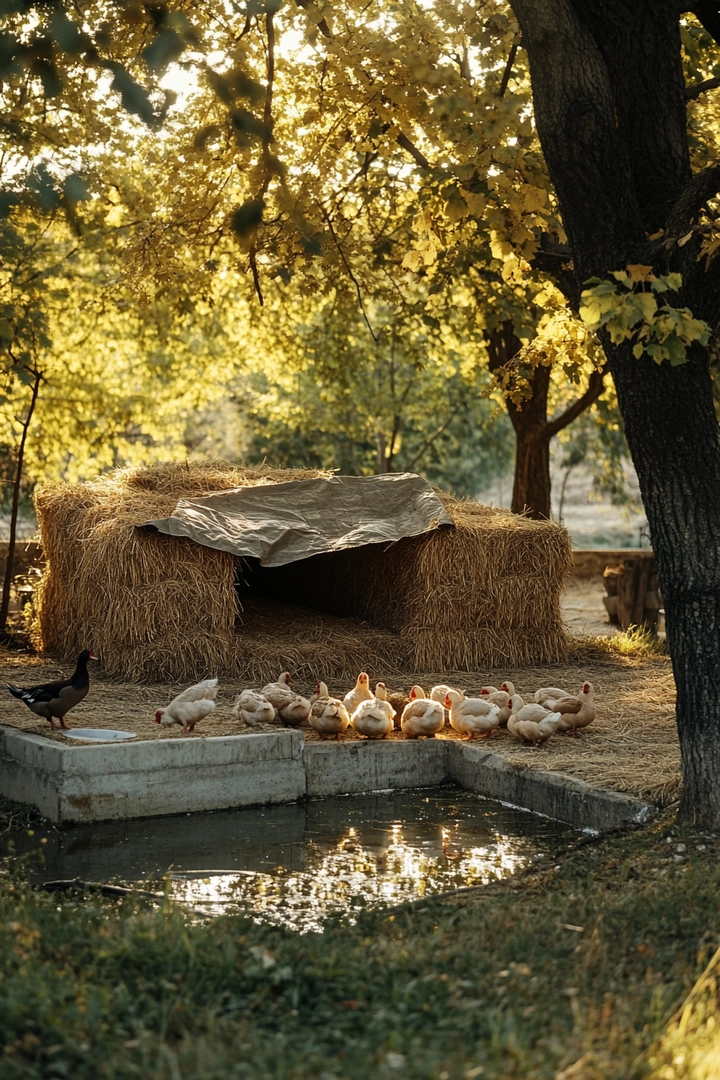
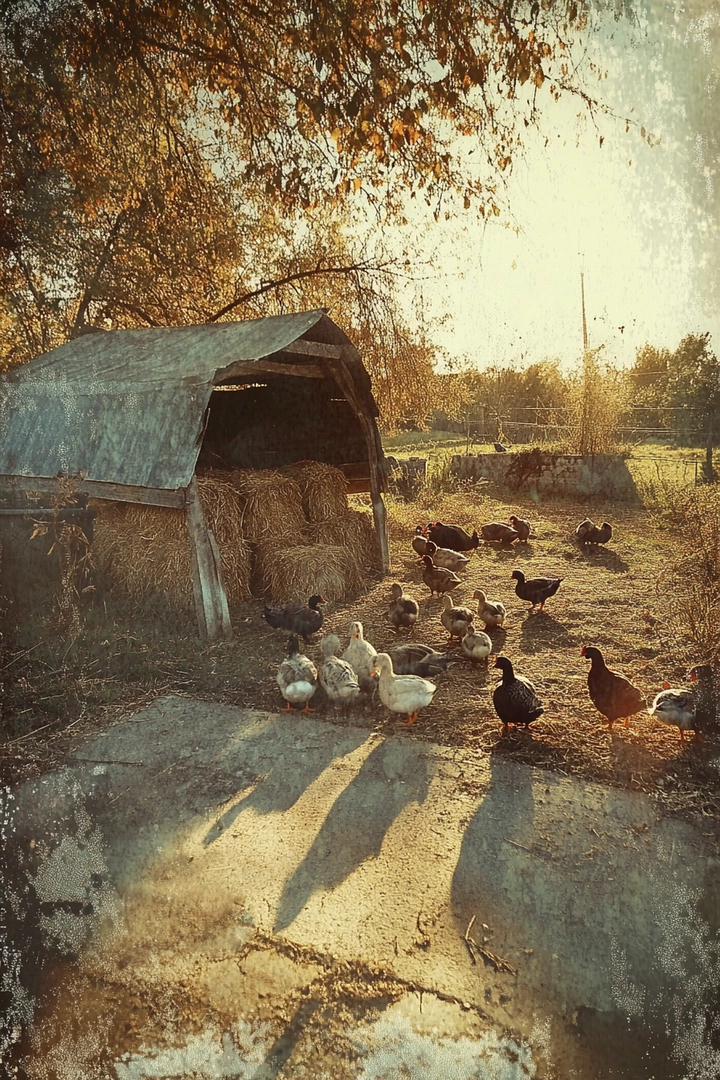
17. Affordable Duck Coop from Repurposed Materials
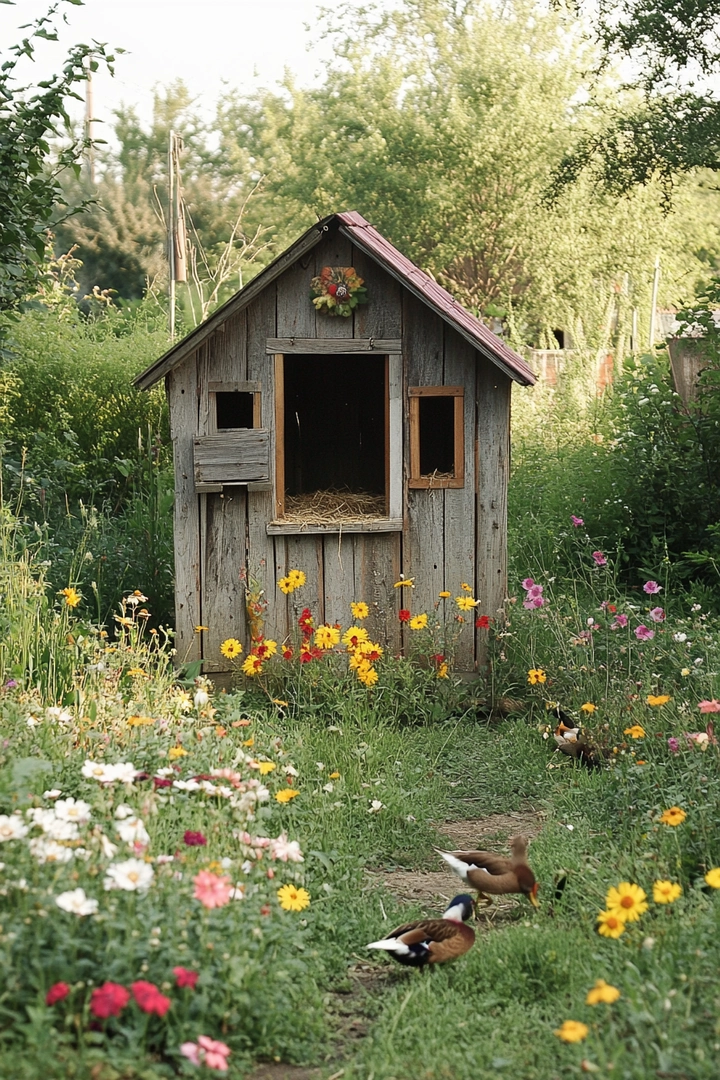

An affordable duck coop built from repurposed materials highlights the importance of sustainability in homesteading. Gather materials like old fences, doors, and other wooden scraps to create a structure that meets the needs of your ducks.
This design can be easily customized to include nesting boxes and access points for feeding and cleaning.
Positioning the coop in a small urban backyard filled with wildflowers allows the ducks to enjoy foraging opportunities and contributes to a vibrant ecosystem. Regular monitoring of the coop ensures that it remains secure and comfortable for the ducks.
This project encourages creativity and resourcefulness, showcasing how homesteading can begin with minimal resources.
- Inspect all repurposed materials for safety before construction.
- Incorporate ventilation holes to maintain air quality within the coop.
- Document the building process and share your tips on using repurposed materials.
- Engage with local communities to exchange ideas and inspirations for sustainable living.
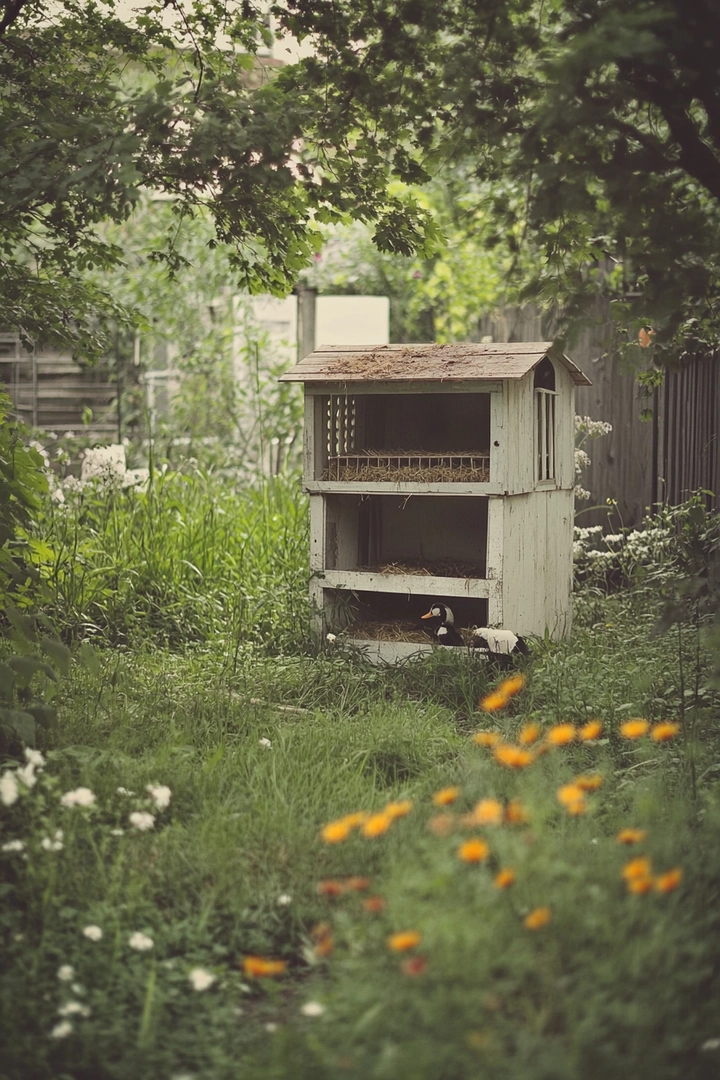
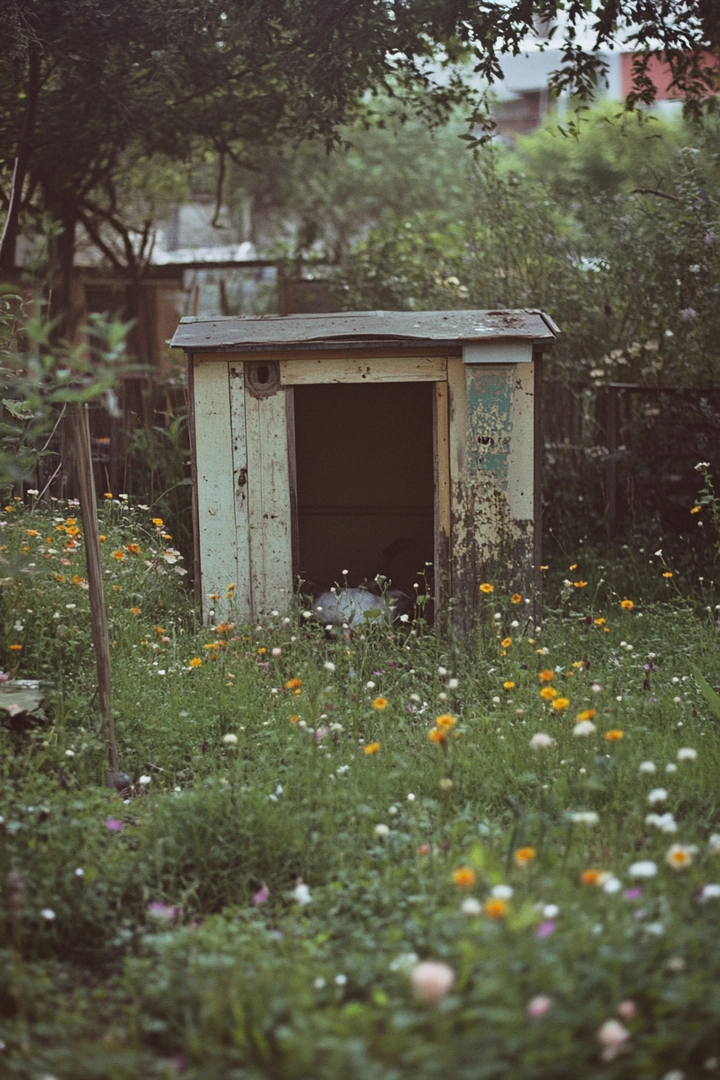
18. Compact Duck Coop from an Old Wooden Door
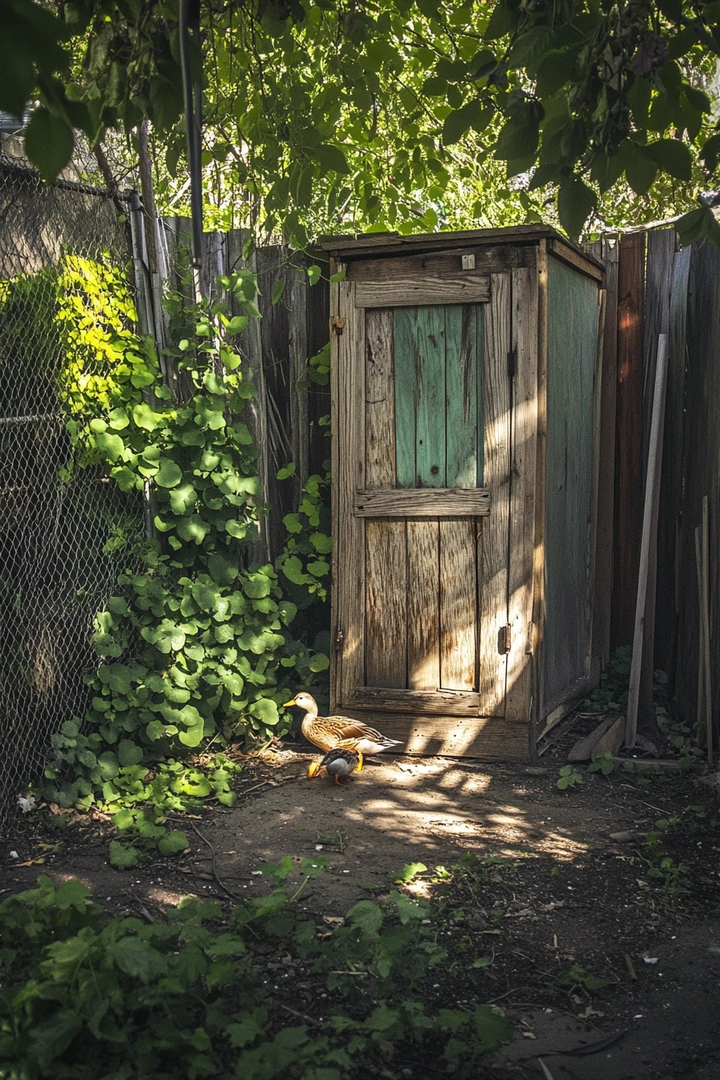
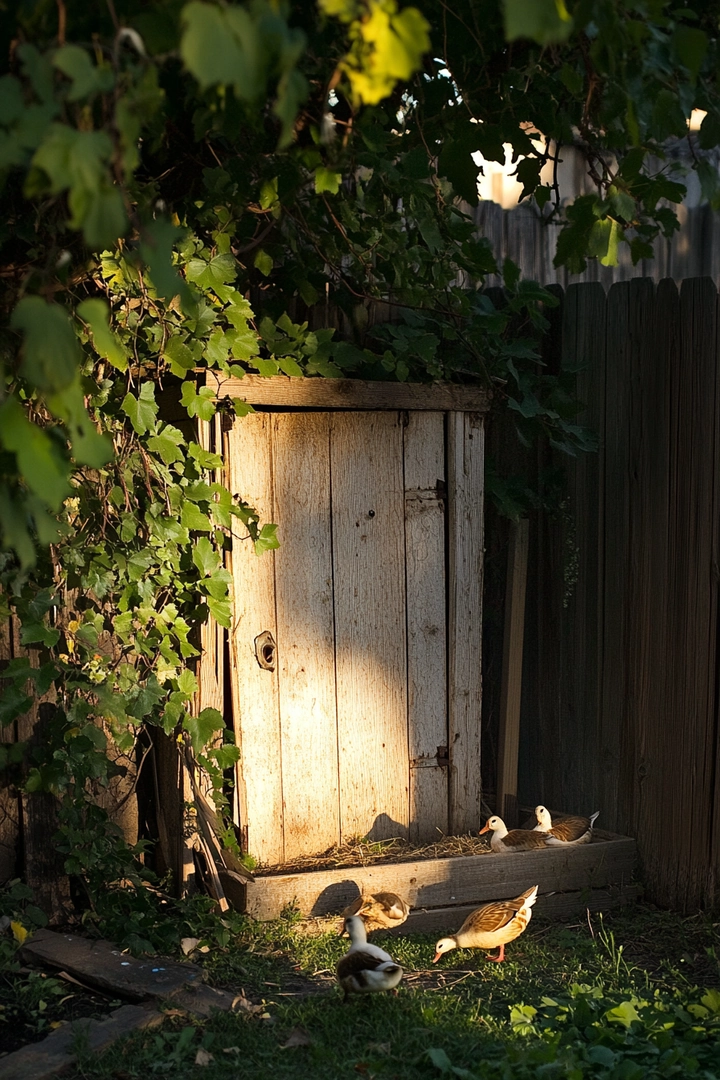
A compact duck coop made from an old wooden door and scrap wood is a clever way to utilize materials that may otherwise go to waste. This design is simple yet effective, providing a cozy environment for your ducks.
Ensure that the door is cleaned and reinforced to create a stable structure.
Position the coop in a suburban backyard with climbing vines, as this can enhance the aesthetic while providing shade for the ducks. Regular maintenance and monitoring are essential to ensure the ducks remain safe and comfortable.
This project showcases how to start small with homesteading and gradually expand your efforts.
- Secure the door with heavy-duty hinges to ensure it remains functional.
- Incorporate small windows for ventilation while keeping predators out.
- Document the building process to inspire others to think creatively about their own setups.
- Share your experiences with local homesteading groups for additional ideas and support.
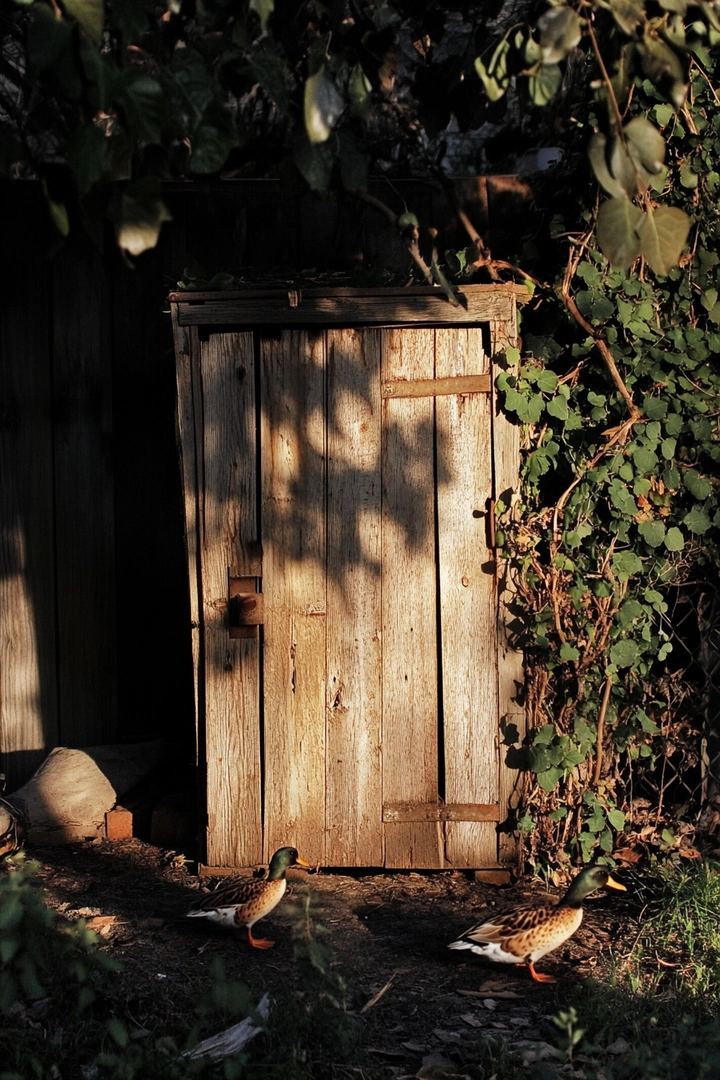
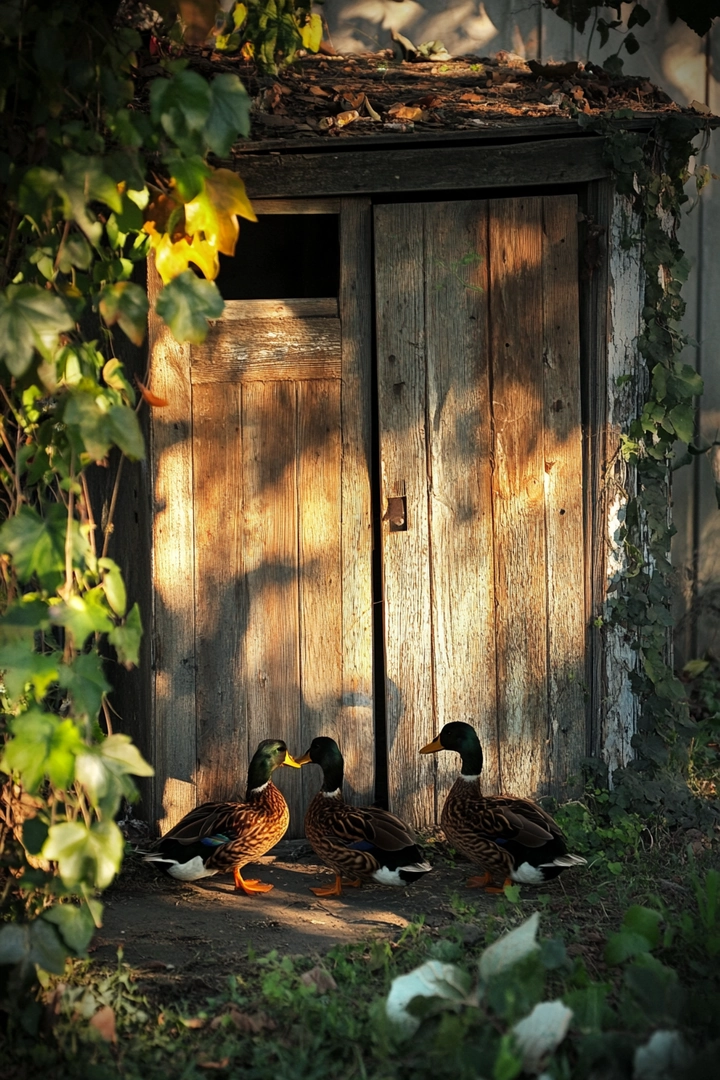
19. DIY Duck Coop from Wooden Pallets and Old Fencing
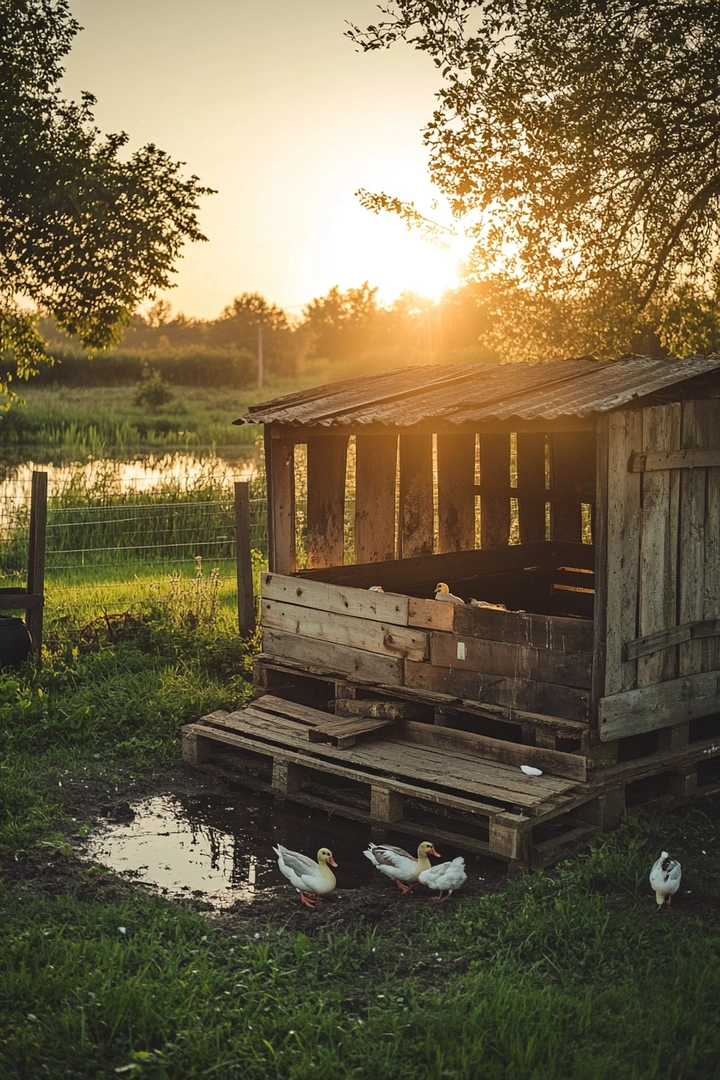
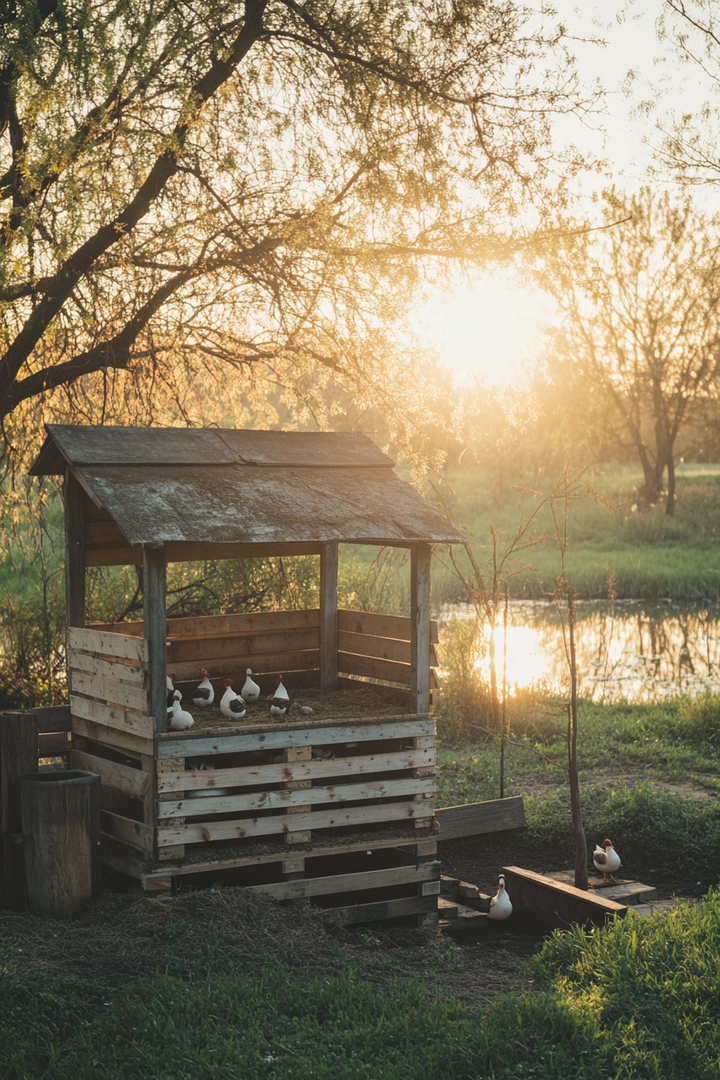
A DIY duck coop constructed from a mix of wooden pallets and old fencing provides an excellent solution for sunny corners of a rural yard. This design allows for a sturdy structure while incorporating materials that might otherwise go unused.
The coop can be designed to include a small pond or water feature, enhancing the ducks’ living environment.
Regular monitoring of the ducks and the structure ensures a safe and comfortable environment. This project encourages creativity and resourcefulness in homesteading, proving that sustainable living can start with minimal investment and effort.
The coop can also be customized with additional features as your needs evolve.
- Ensure that all materials used are safe and free of harmful chemicals.
- Incorporate a secure latch to keep the ducks safe from nighttime predators.
- Document your process and share your creations with online communities.
- Engage with other homesteaders to exchange ideas and experiences.
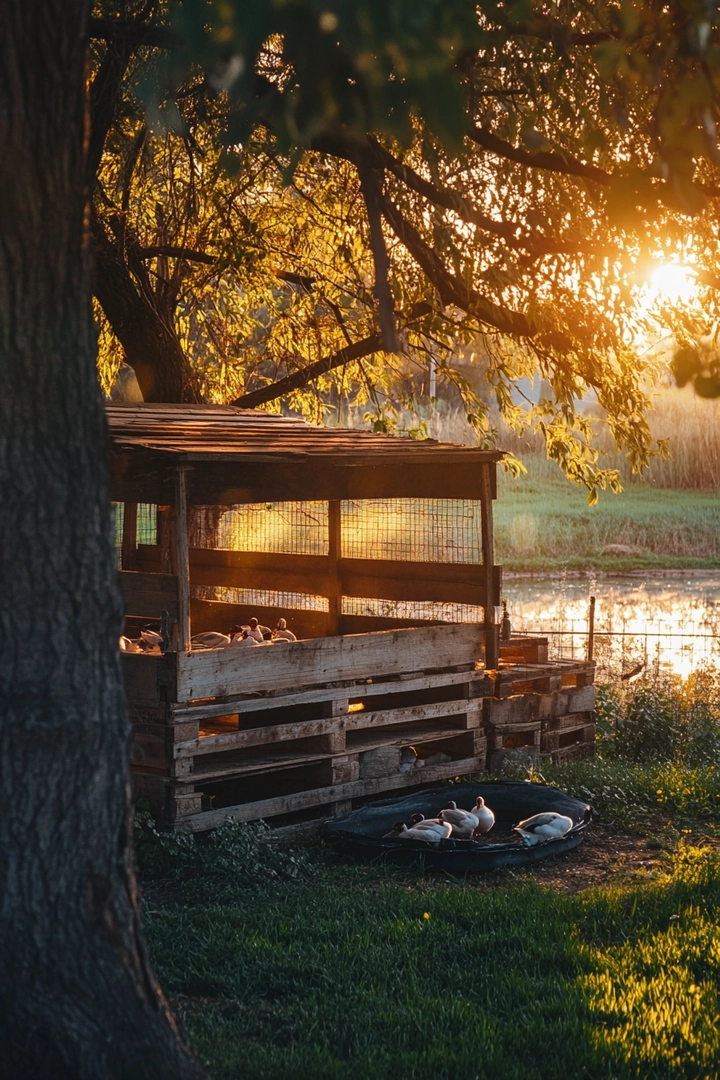
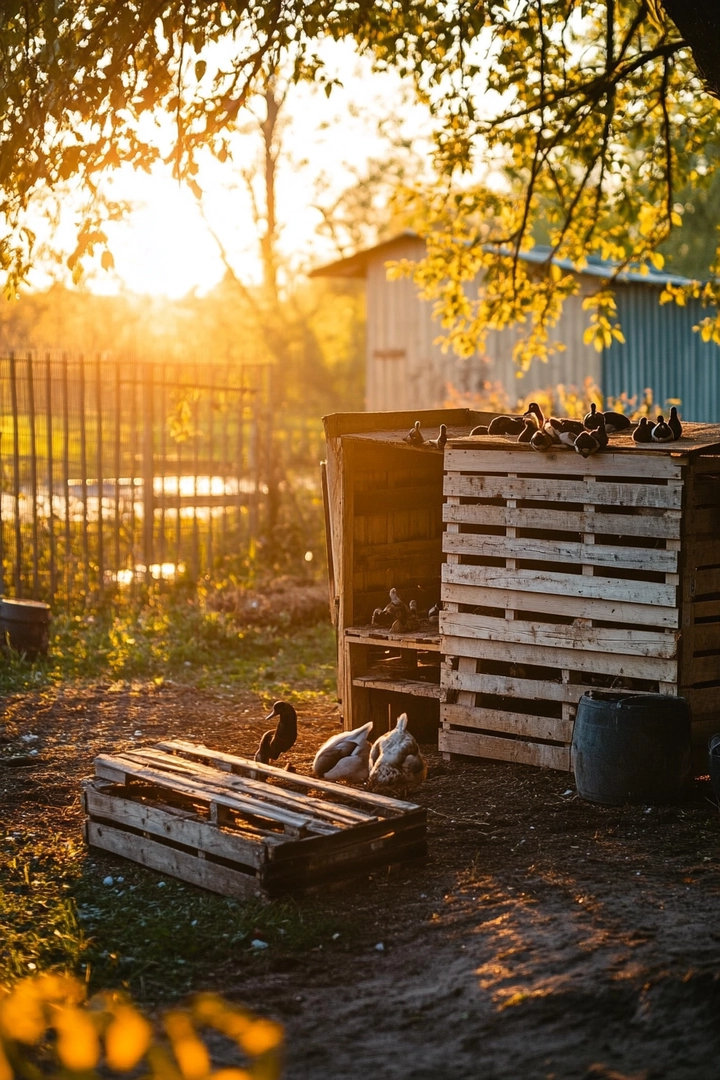
20. Inexpensive Duck Coop from Corrugated Metal and Wooden Supports
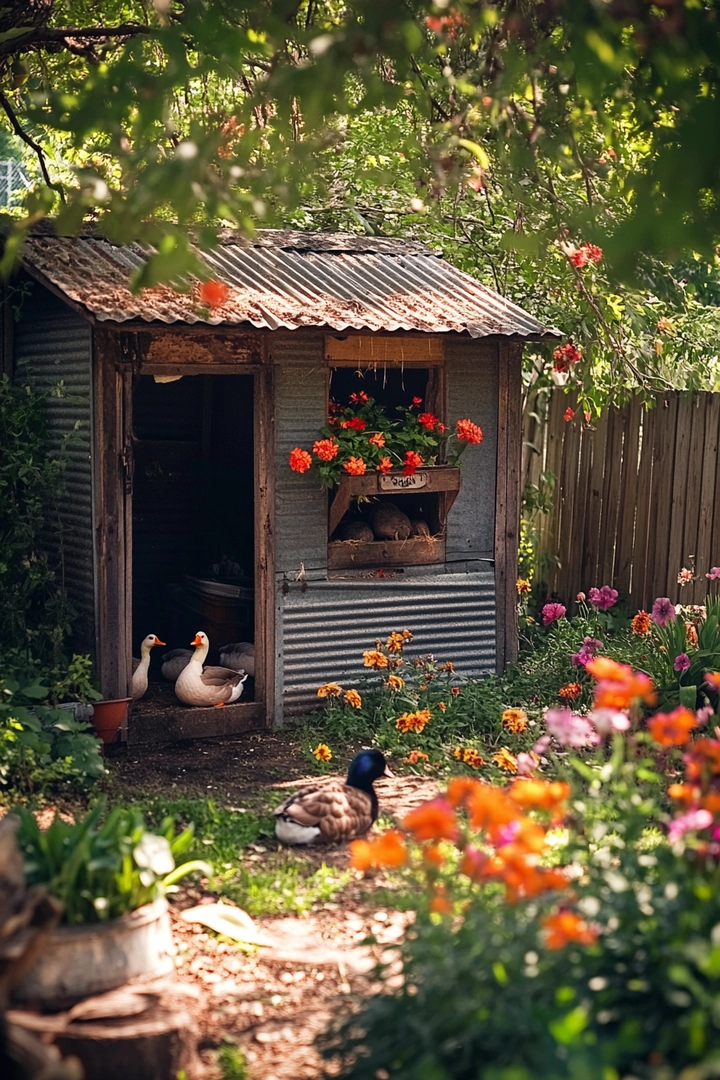

An inexpensive duck coop made from corrugated metal and wooden supports is a durable and cost-effective solution for suburban gardens. This design offers a weather-resistant shelter while being easy to construct.
The corrugated metal provides excellent insulation, keeping the ducks comfortable in varying weather conditions.
Positioning the coop in a sunny spot with a nearby flower bed enhances the environment for the ducks, allowing them to forage and enjoy their surroundings. Regular maintenance and monitoring will ensure that the coop remains safe and comfortable for your ducks.
This project showcases how homesteading can be accessible and practical for anyone with limited resources.
- Secure the corrugated metal to prevent leaks and ensure the structure remains stable.
- Add ventilation openings to maintain air quality inside the coop.
- Document your building process to inspire others to explore affordable homesteading options.
- Consider forming a local homesteading group to share ideas and resources.
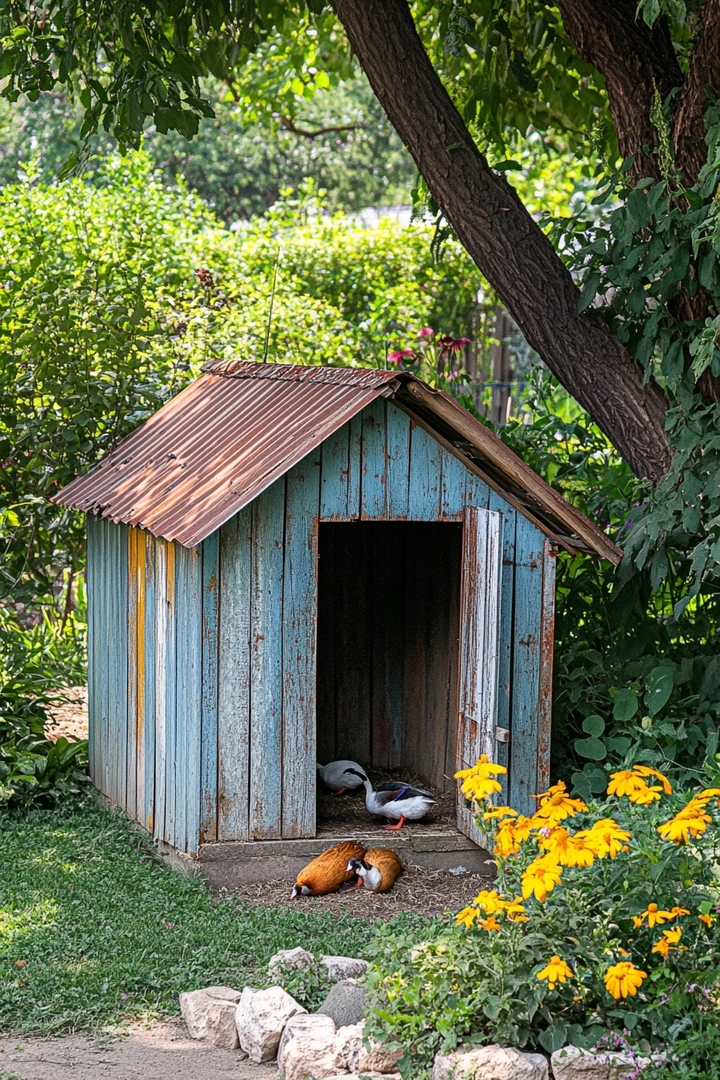
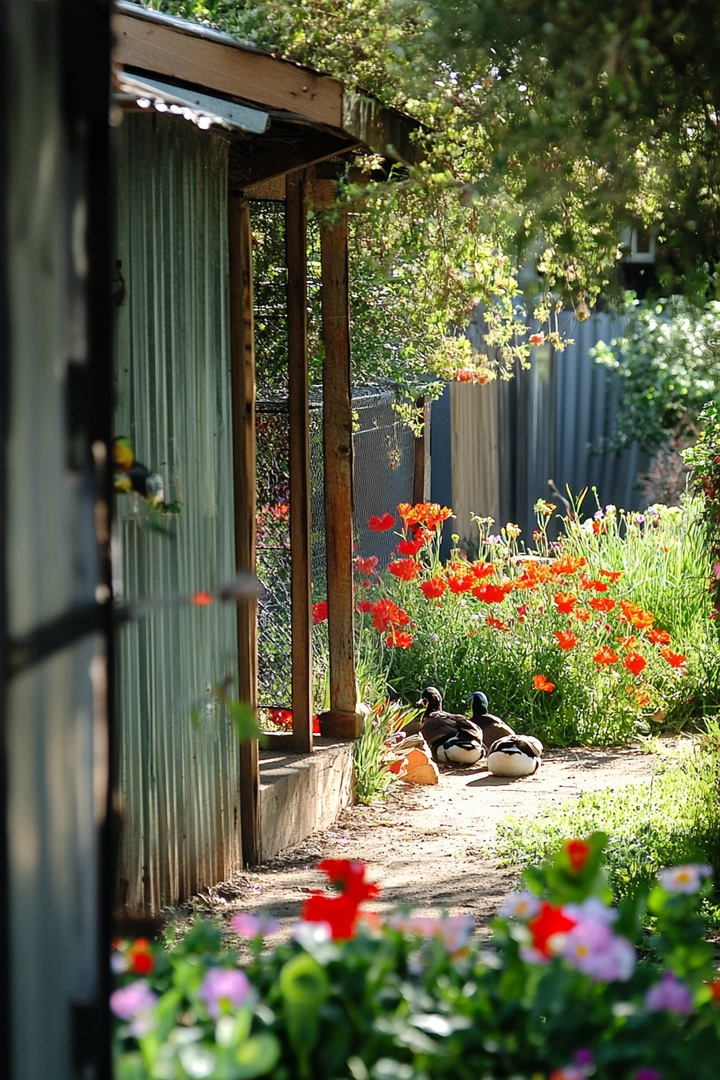
In conclusion, embarking on your backyard homesteading journey with ducks doesn’t require significant investments or extensive resources. The ideas presented here show that with a little creativity and determination, anyone can build a practical duck coop suitable for their needs.
Remember to start small, enjoy the process, and celebrate your successes along the way. Document your progress to inspire others and build community connections as you cultivate your homesteading skills.
